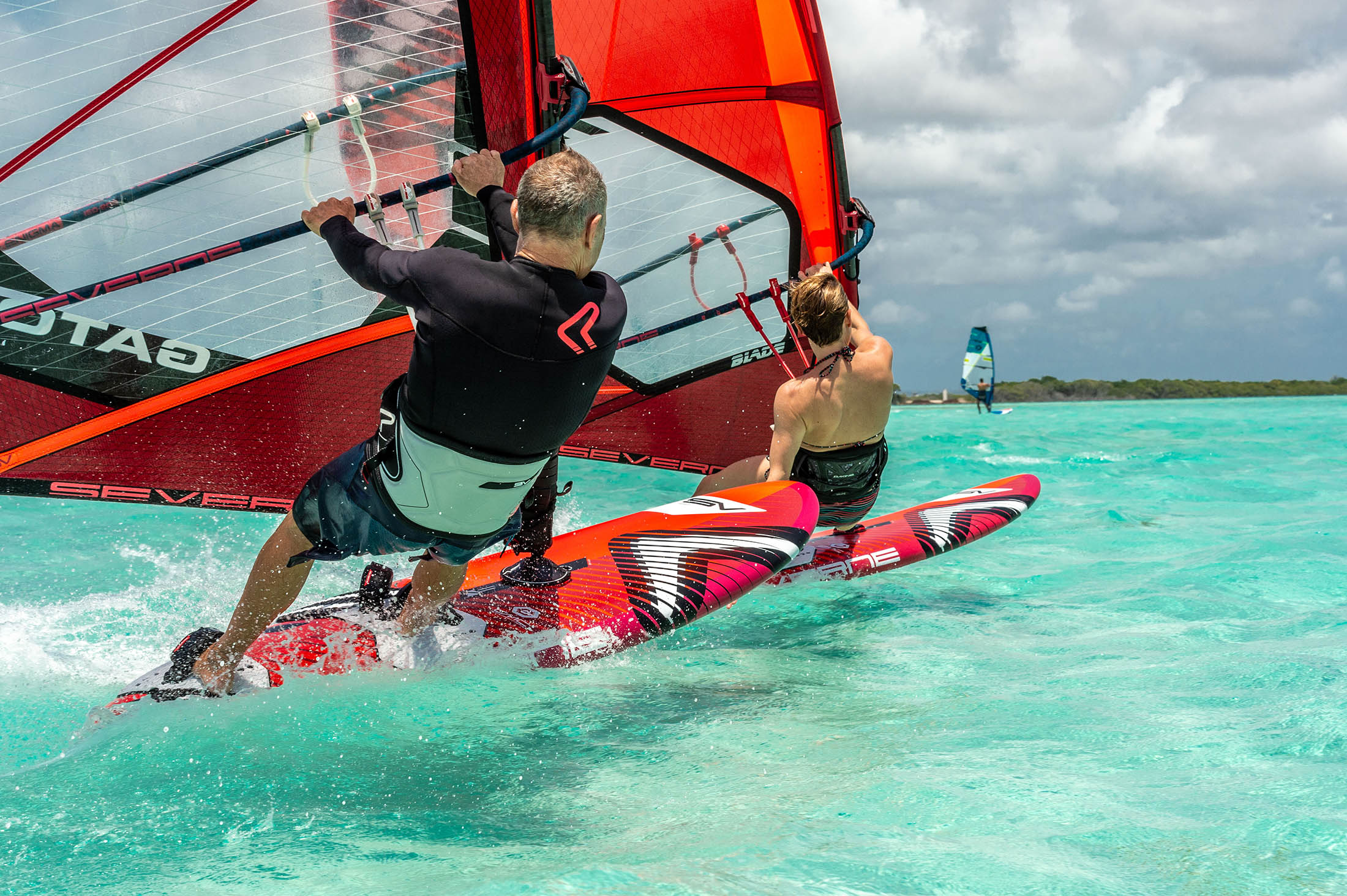
SEVERNE BOARD RANGE OVERVIEW
Severne Team Rider and Coach Simon Bornhoft, take us through an overview of all the different board styles categories to help you build the foundations of choosing exactly the right type of board for you and your quiver.
Even for experienced windsurfers, working out which board is right for you can be confusing, especially with so much choice, varying terminology, conflicting ‘advice’ and an overload of beach chat. Essentially “the right board for you” depends on your current level, the location you most regularly sail at, your preferred windsurfing ‘style’ and your future aspirations. Within our fully comprehensive range, each Severne board has its own unique features that are specifically designed to give you the best possible windsurfing experience.
Photography: Windwise / Kate Ocean / Lorenzo Mittiga / Marc van Swoll / Louis-arnaud Lavasier / Severne
The SV range is divided into these five core windsurfing categories.
Freeride (Flat Water)
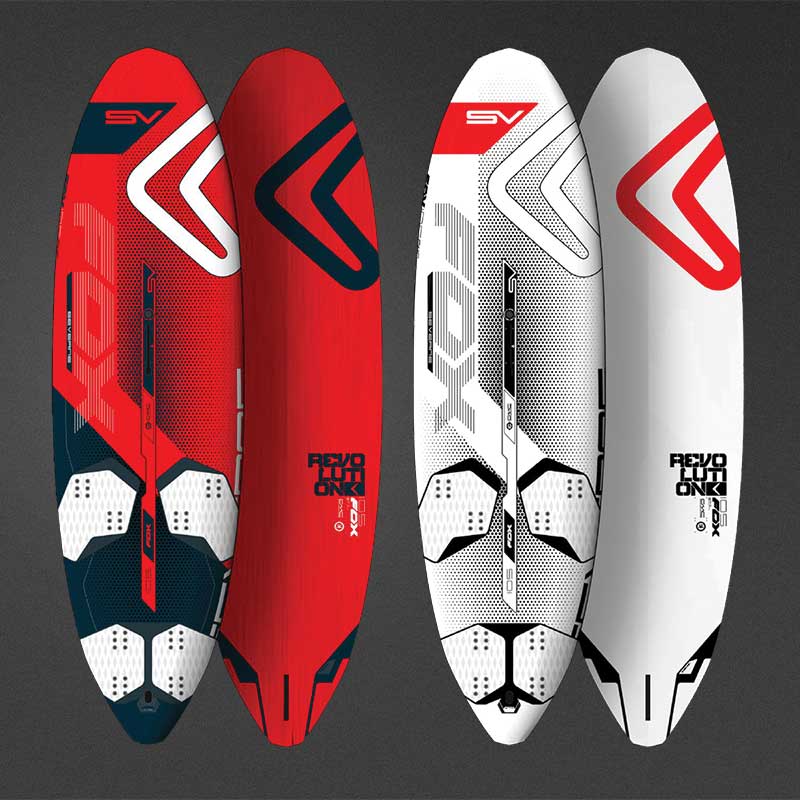
FOX
FREERIDE
Freewave (Flat + Wave)
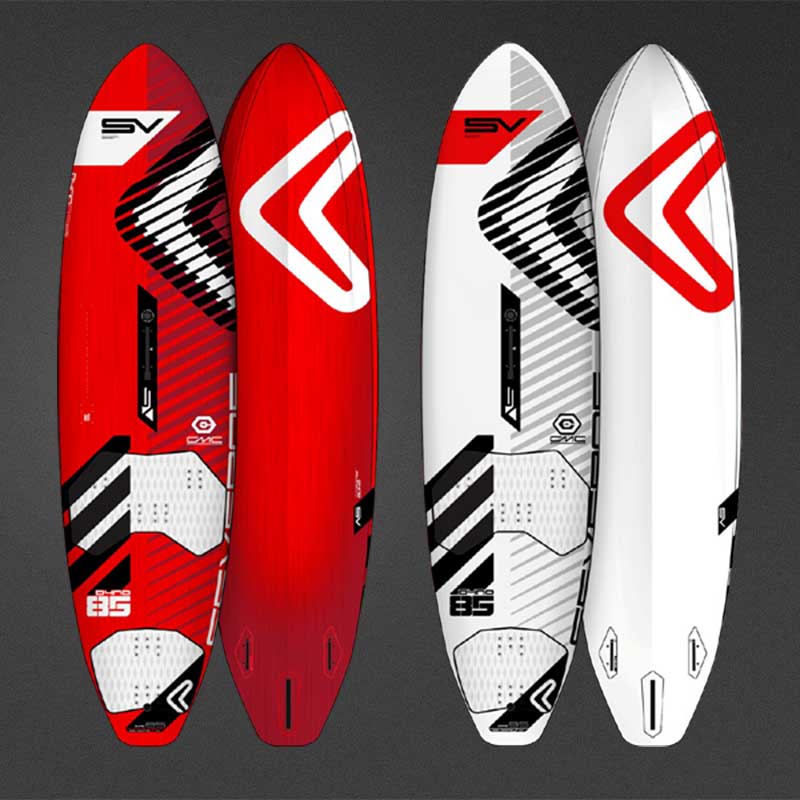
DYNO
FREEWAVE
Freestyle (Flat / Chop / Tiny Waves)
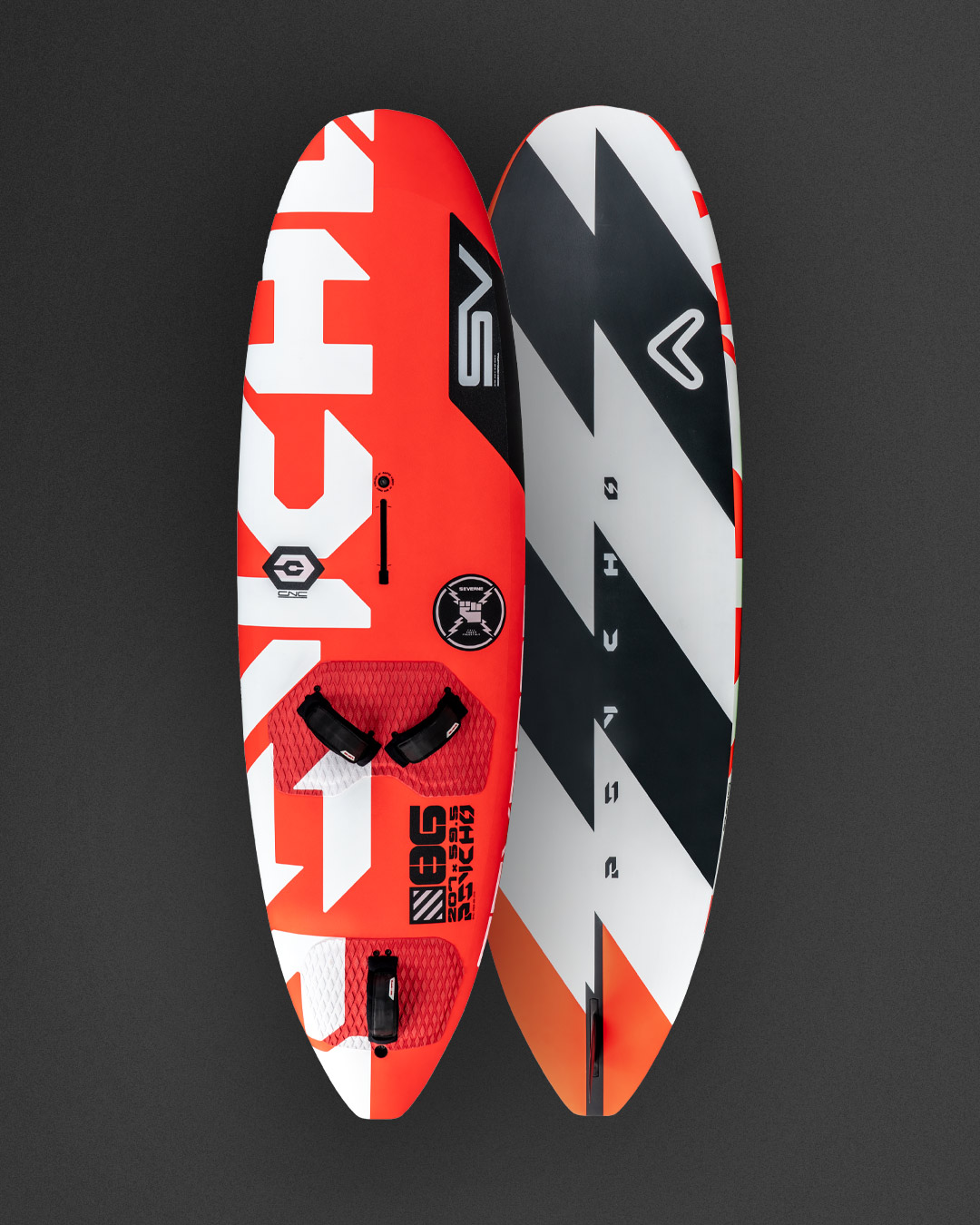
PSYCHO
FREESTYLE
Wave (Swell & White Water)
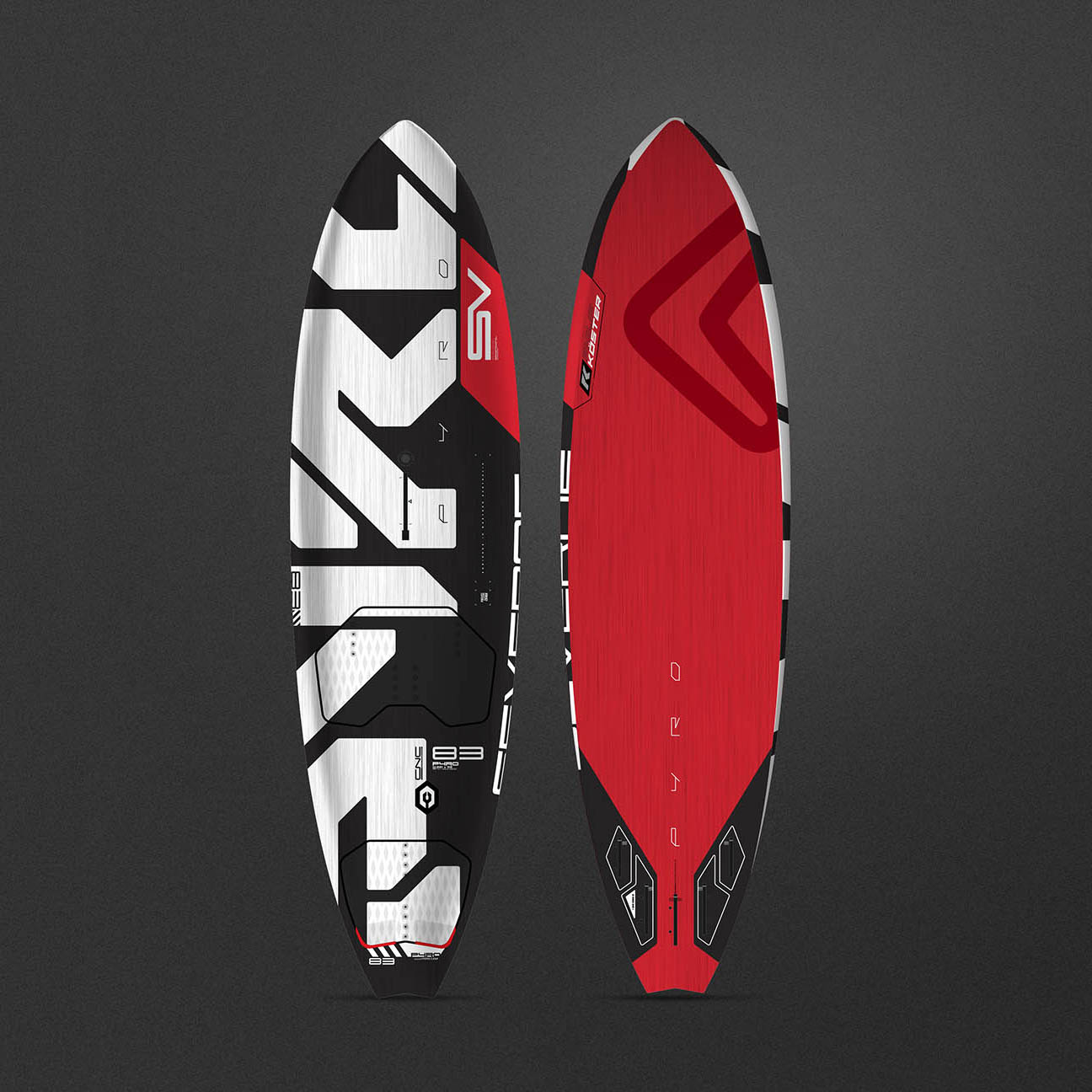
PYRO
PRO WAVE
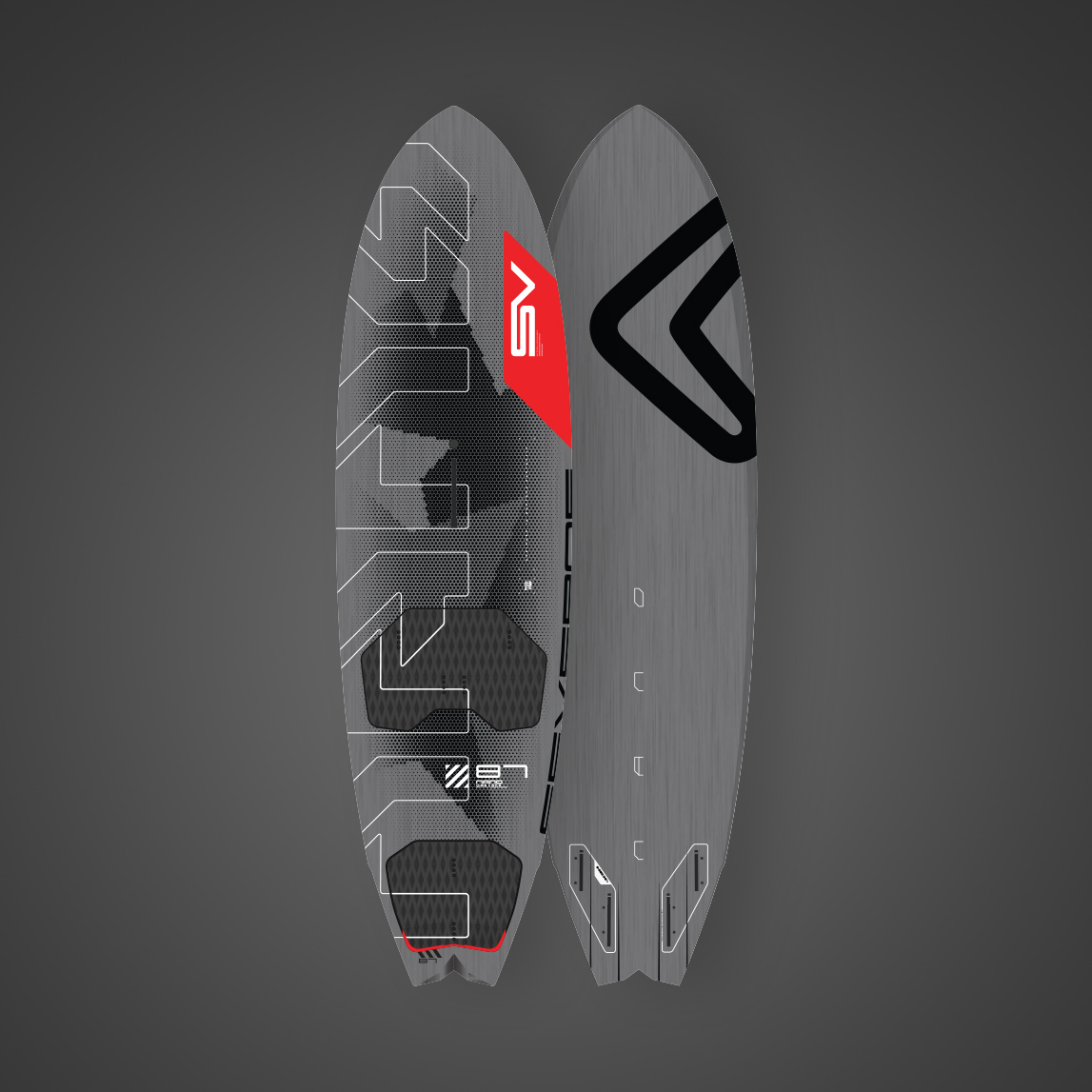
NANO
ALLROUND WAVE
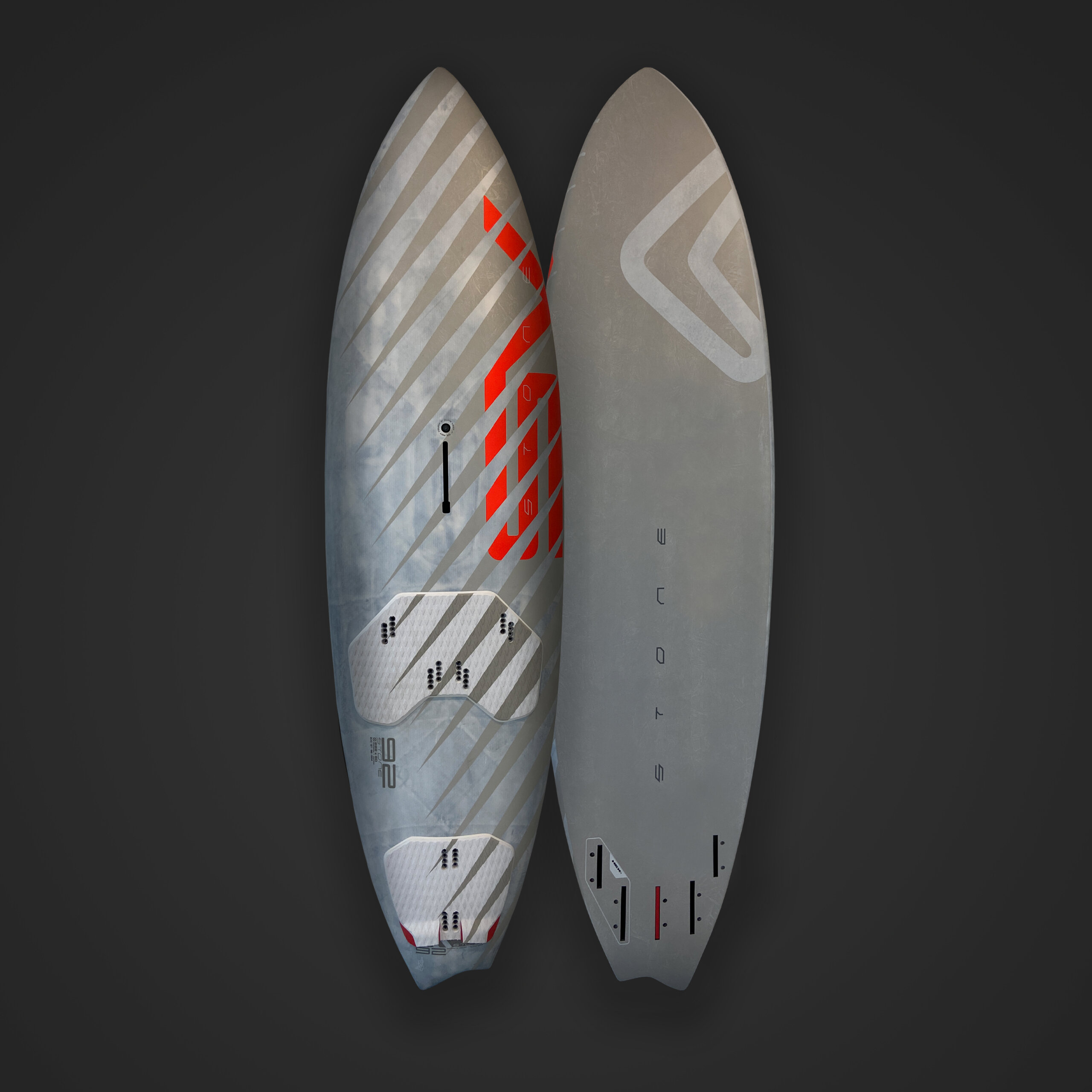
STONE
ASYMMETRIC WAVE
Foiling (Flat/Choppy water)
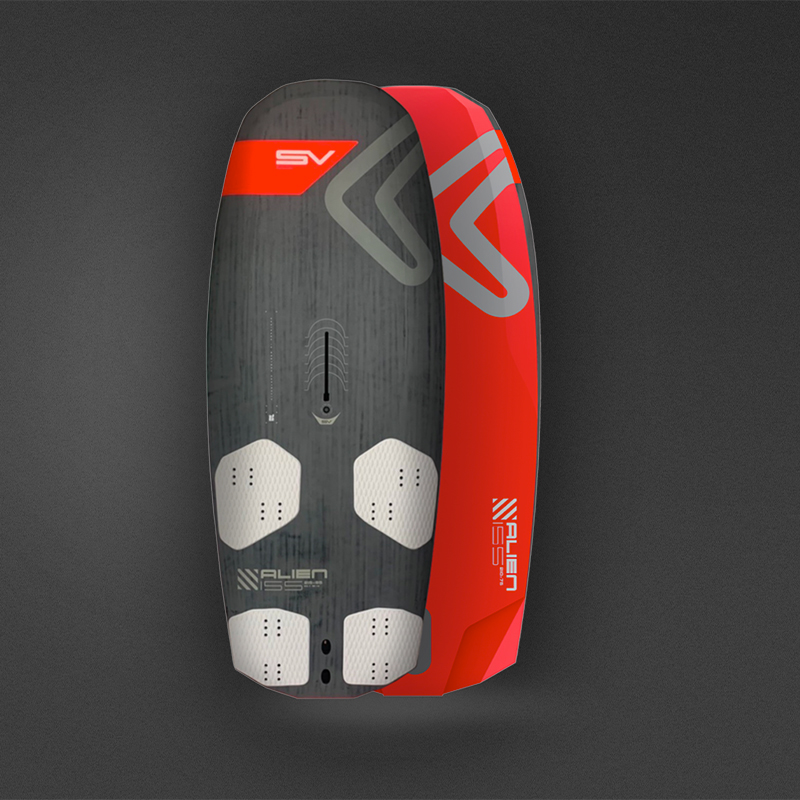
ALIEN
FOIL FREERIDE
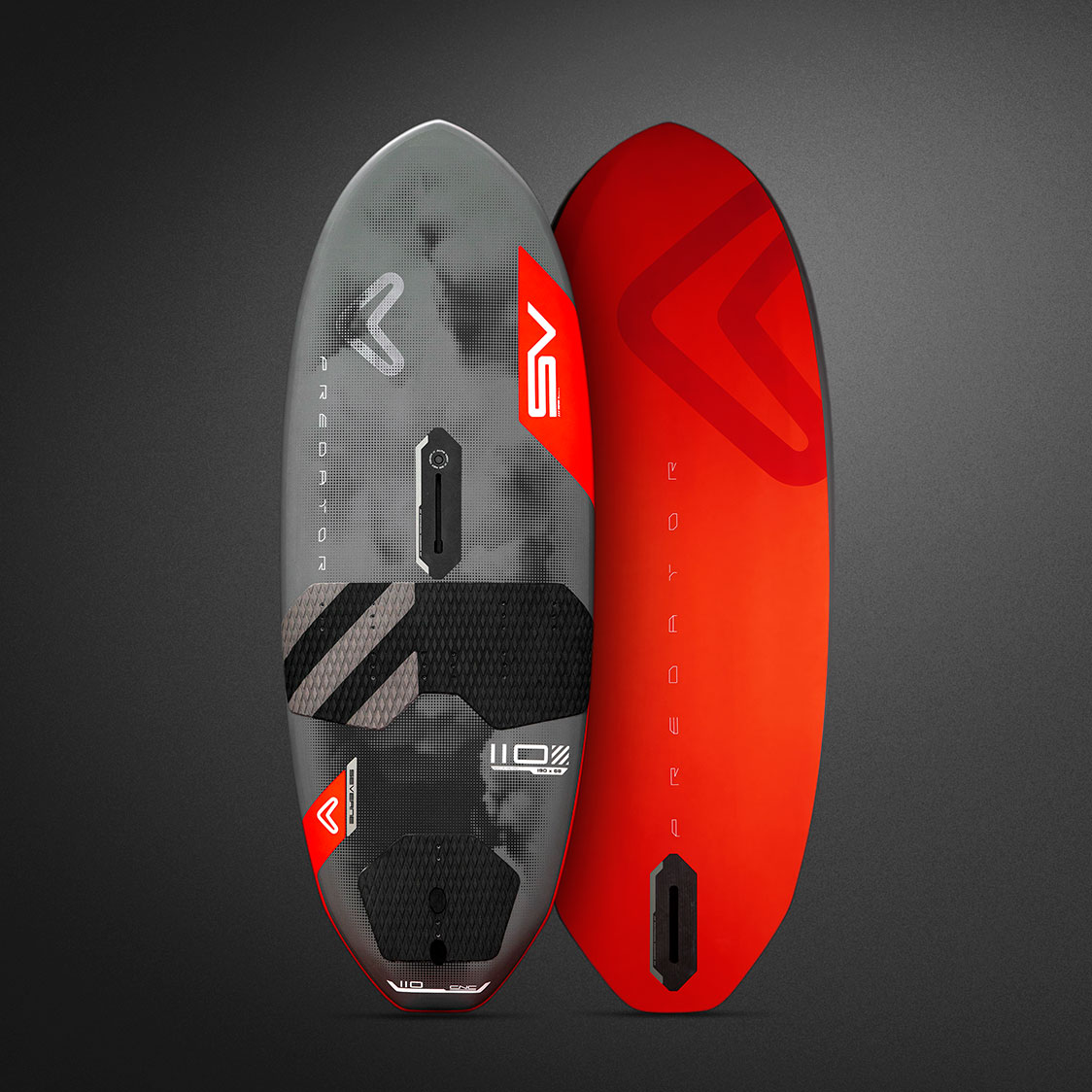
PREDATOR
FOILSTYLE
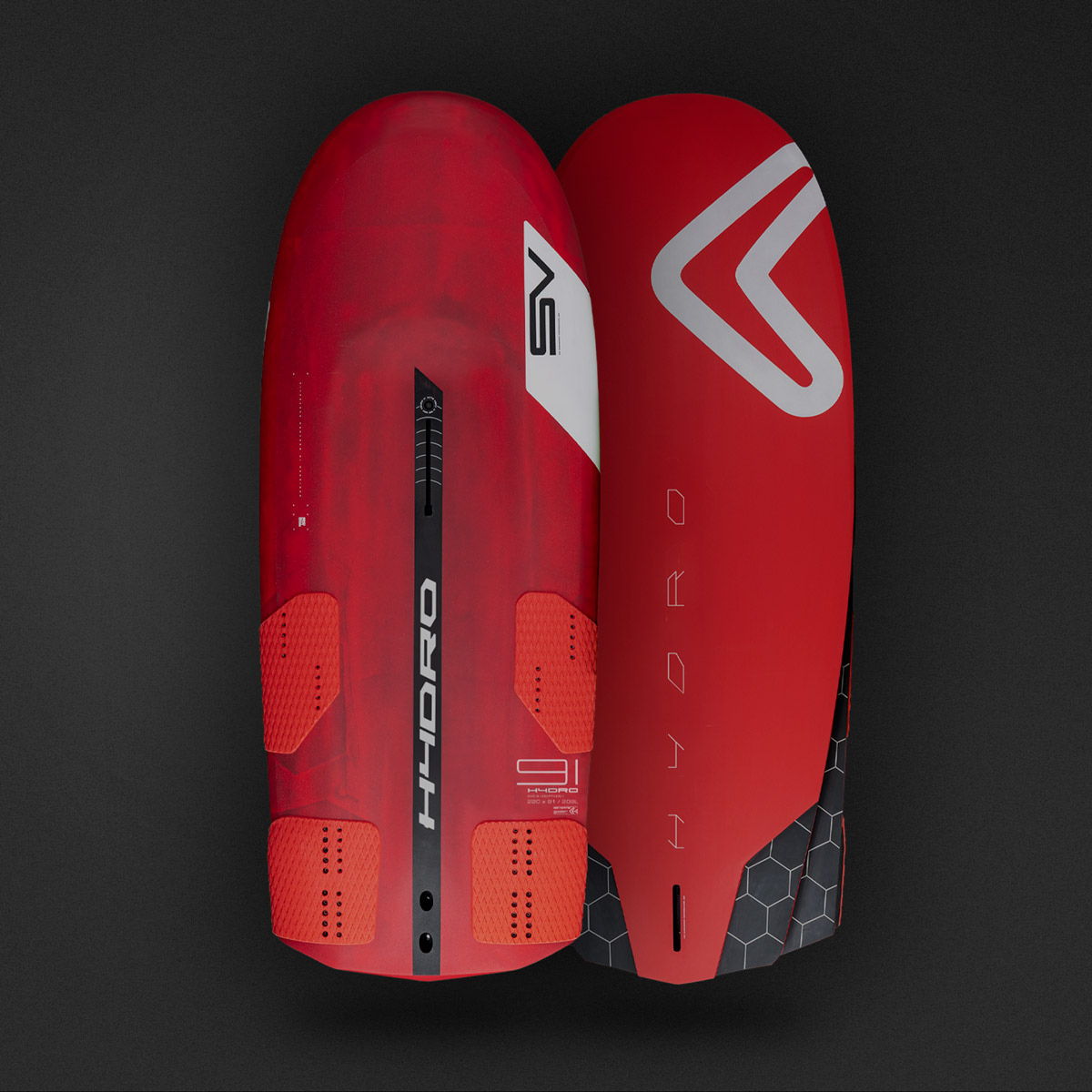
HYDRO
FOIL RACE
Whilst there will be some crossover (We’ll explain when), each category determines the ‘style’ of windsurfing, the ‘feel’ of the board and the suitability for your level and the conditions you sail in.
Let’s check out each category and how that is relevant to your windsurfing.
Freeride
Freeride boards are designed for recreational riders who want to enjoy windsurfing in a variety of conditions. The designs are generally fairly wide, stable and suited to blasting over flat, choppy water and rolling swell. They’re a great option for early planing, easy blasting, keeping upwind and carrying a wide sail range.
Larger Freeride boards (Approximately 120L+)
Offer great stability for uphauling, harnessing, footstraps, early planing, easy blasting, larger rigs and all levels of gybes.
Smaller Freeride boards (Sub 120L)
Perfect for reaching higher top speeds, coping with stronger winds, rougher water states and mastering full planing carve gybing.
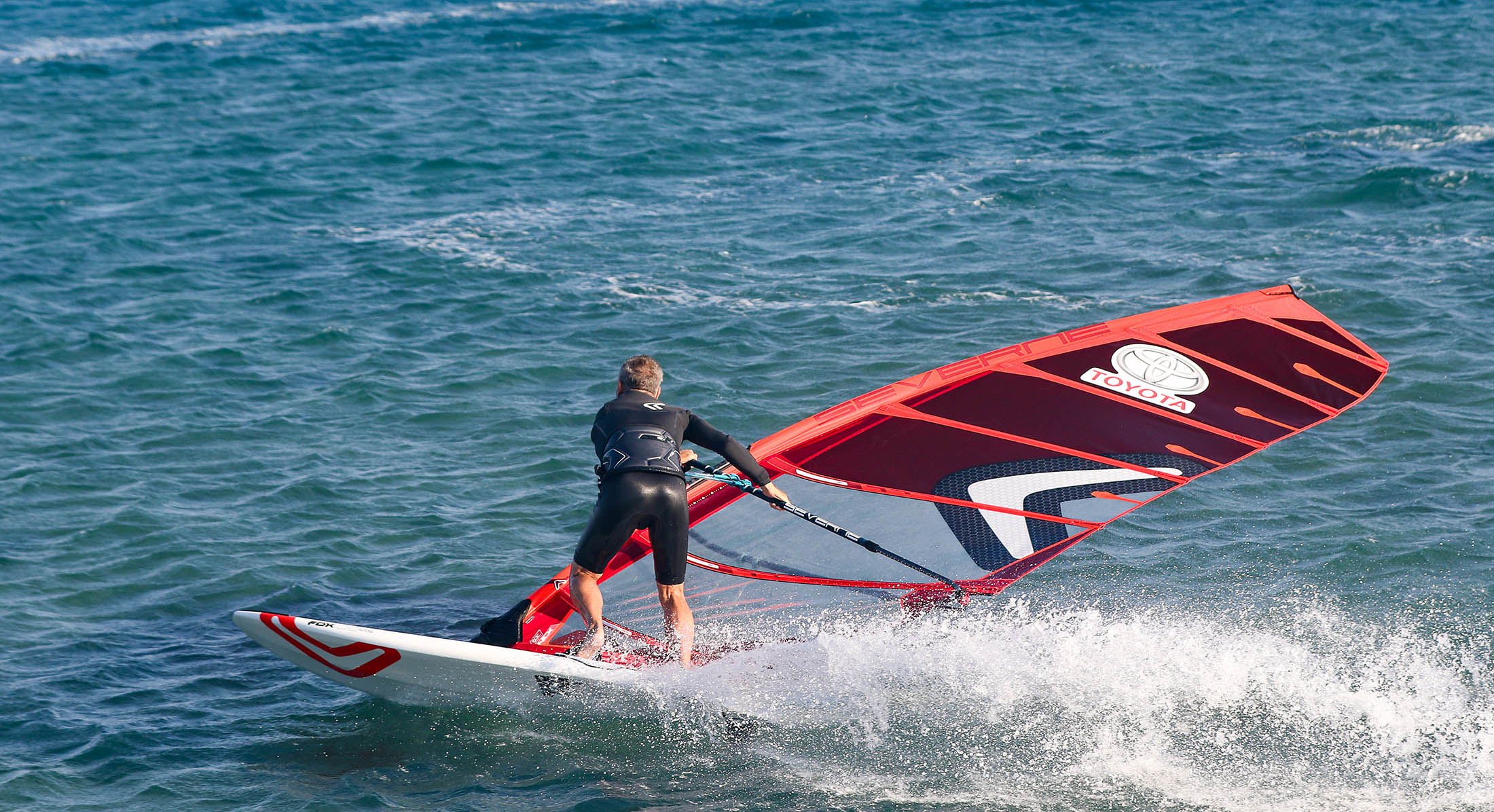
Faster Freeride boards = flatter tail and overall rocker lines, harder rails and more upright fins.
Entry level Freeride boards = More vee, slightly more rocker, softer rails and often slightly swept back fins to improve control at speed.
Footstraps: Many designs offer inboard settings for those at early intermediate stages and outboard straps for more experienced blasters looking to hold down larger rigs and handle longer fins.
Freeride Volume Ranges: 95L-140L+
Board Sizes: Length 236-249cm / Width 61-78cm
Sail Range: 4.5m-8m
Water state: Flat / Choppy / Rolling Swell
Wind range: 12-30 Knots
Level: Improver-Advanced
Q. Who are Freeride boards good for?
A. Freerides are the most sold boards around the world and they’re designed for planing windsurfing conditions at flatter water locations. They’re ideal for improver-intermediate inland sailors and more advanced blasters on open water and coastal sailing. When sailing sub 120L boards it’s good to be able to waterstart as they become harder to uphaul at lower volumes. So, for cruising around on flat to choppy water conditions, mastering your gybes, going fast and having a real blast, a Freeride board is a very good choice.
Q. Any downsides?
A. Once you venture into very confused water state or any breaking white water, their extra width and lower nose rocker profile (compared to freewave and wave boards) makes them harder to handle.
Quiver Planning: FREERIDE – Freewave – Wave
It’s quite common to have a Freeride board for flatter water conditions and then move down to a Freewave or wave board when sailing in coastal locations with breaking white water.
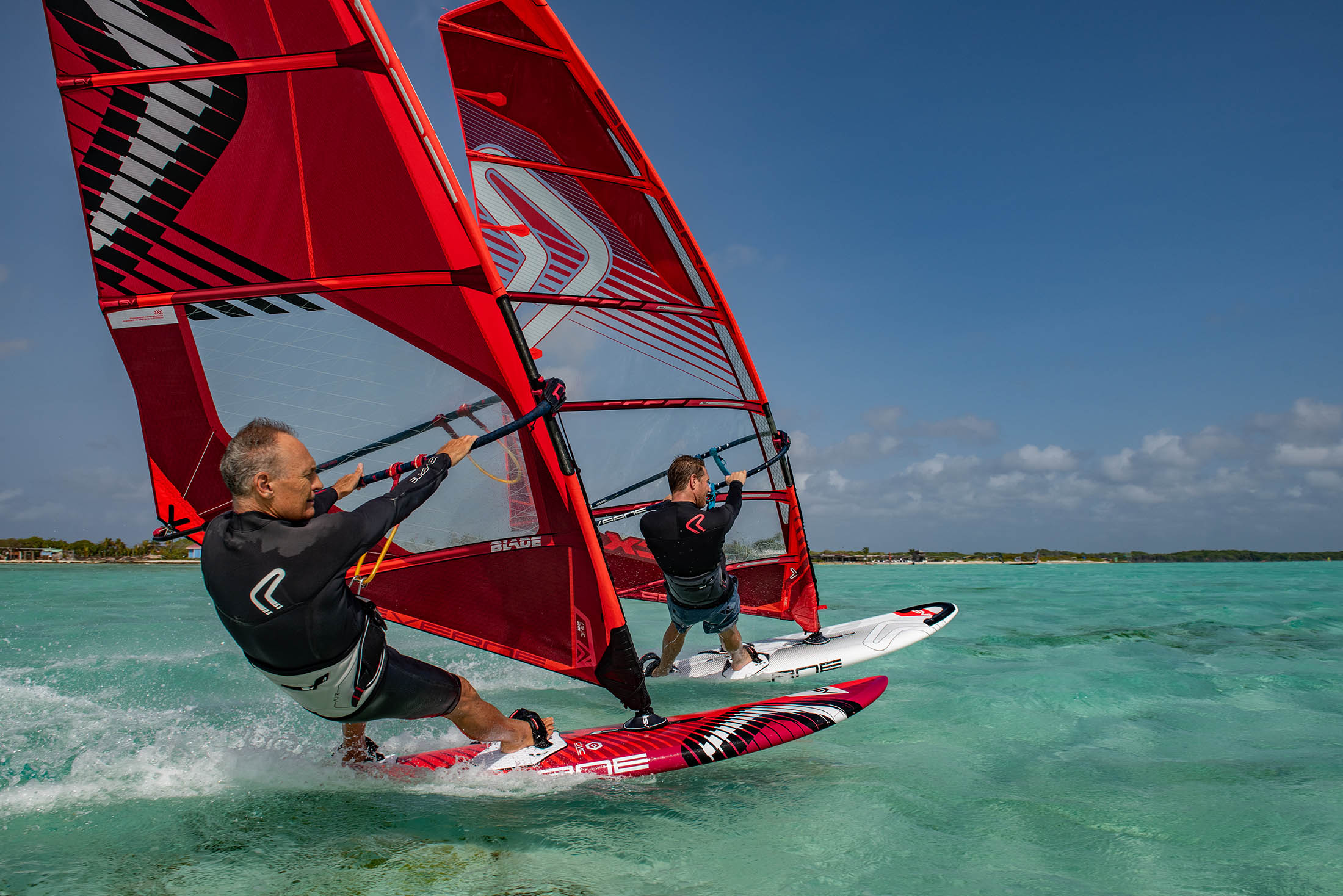
If you’re regularly sailing on flatter water, seeking top speeds, fast gybes and taking on your mates with a GPS challenge, then go for the SV FOX 95L-140L. It’s a fully dedicated blasting board, that absolutely flies with maximum control in chop and provides top quality carve gybing.
If you’re looking for a smaller (sub 125L) Freeride and you’re not worried about super early planing or the highest top speed, consider a SV DYNO (85-125L). Whilst technically it’s a ‘Freewave’ board (so has more rocker and softer rails), it can be set up in Freeride mode with a more upright single fin and outboard straps. In contrast to the flying Fox, a Dyno offers a gentler, smoother, chop busting ‘4 x 4’ style Freeride experience.
Simon Says. “On our Windwise courses we often switch between the Fox for early planing sessions with larger rigs, fast blasting and gybe training. Then, when the wind increases and the water state becomes rougher, the clients often find the Dyno more comfortable and easier to control in Freeride mode.”
Freewave Boards “Versatility and your gateway into the world of waves”
Freewave boards (sometimes referred to as Freemove/Crossover/Freestyle Wave) are designed for intermediate to advanced riders who want to tackle more challenging conditions with ease and control. They are usually very versatile, agile and allow the rider to handle a very wide range of water states. Compared to Freeride boards they have increased tail and nose rocker, softer rails and are slightly slower to plane. However, Freewaves are much more forgiving when the wind and waterstate become more challenging, so whilst not as foot sensitive as a wave board, they can really excel in sub optimal wave conditions.
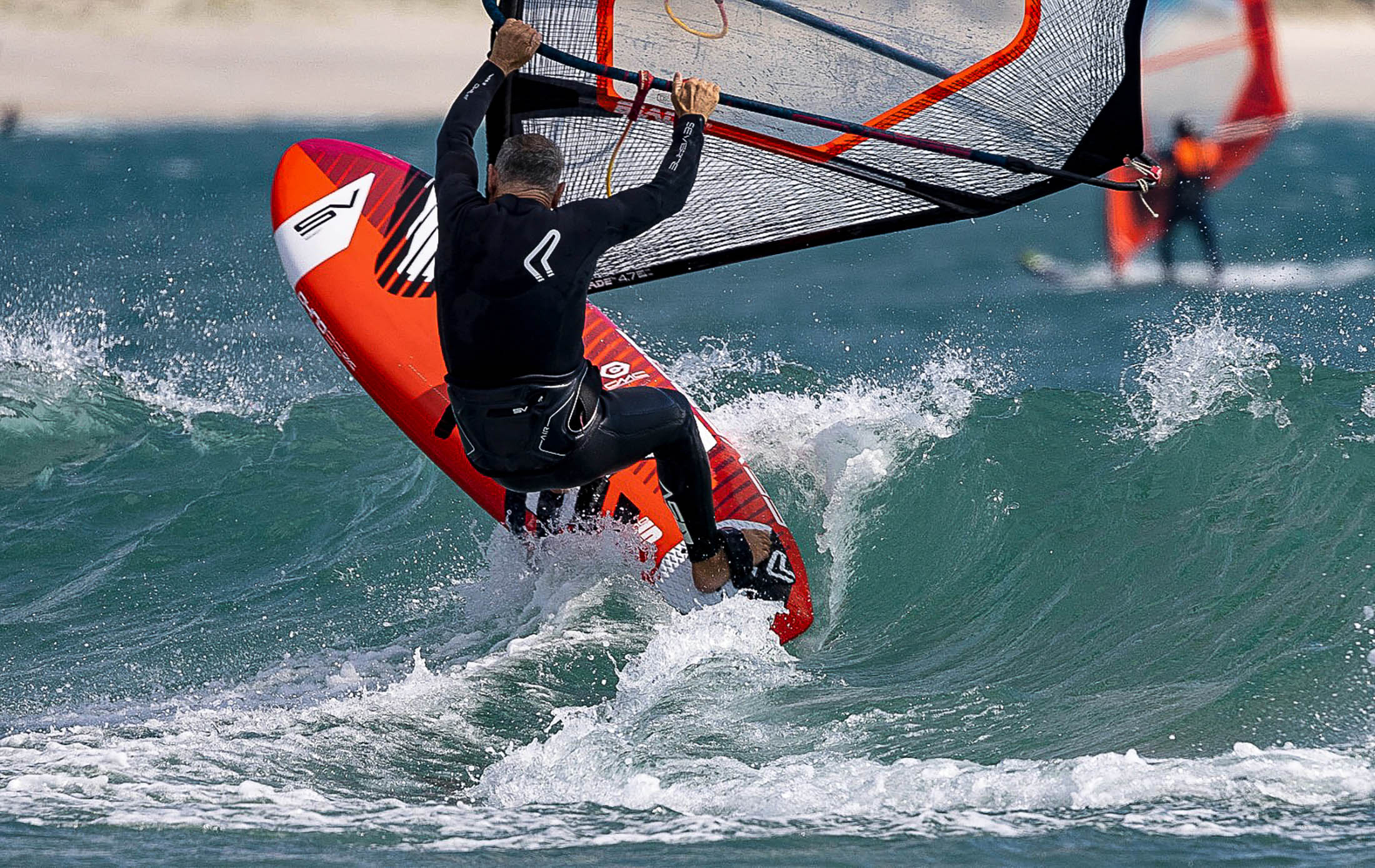
More pronounced nose and tail rocker, more curved outlines, softer rails.
Footstraps Options:
Outboard blasting straps, single fin and slightly higher boom for flat water blasting.
Inboard open straps, tri fin and lower boom for wave situations.
Fins: Raked back Tri-fin set up or upright Freeride single fin.
Volume Range: 85L-125L
Board Size Range: Length 223-235cm / Width 56-69cm
Sail Range: 4m-6.5m
Wind range: 15-35 Knots
Water state: Flat / Choppy / Rolling Swell / Breaking White Water / Waves
Level: Intermediate-Advanced
Q. Who are Freewave boards good for?
A. Once you’re blasting back and forth and able to waterstart on Sub 120-130L Freeride boards and you’re thinking of getting into coastal sailing or waves, then a Freewave board is ideal for you. Freewave boards enable you to sail on flat water AND in waves, plus offer greater stability and gybing success rate in challenging conditions. They are more stable and easier to plane than most wave boards, so they work well in mixed conditions. If you wanted one board for a mix of easy flat-water blasting, higher wind gybing, stunning jumping and entry in to waves, then fire up that Dyno Freewave!
Quiver Planning: Freeride – FREEWAVE – Wave
Within your board quiver, Freewaves are often paired with a larger Freeride board or as the ‘next board up’ in volume from a true wave board. E.g.
Fox 120 / Dyno 105 / Pyro 87
Q. Any downsides?
A. Freewaves don’t have the same early planing, large sail carrying capabilities or the top speed of a Freeride board. Also, if you’re fully focused on waves, they can be less forgiving when top and bottom turning on a wave face compared to wave boards as they aren’t quite so compact and responsive. However, they’re often the ‘go to’ board in the real windsurfing world when the wind is hitting that magical Force 5 due to their ease and versatility.
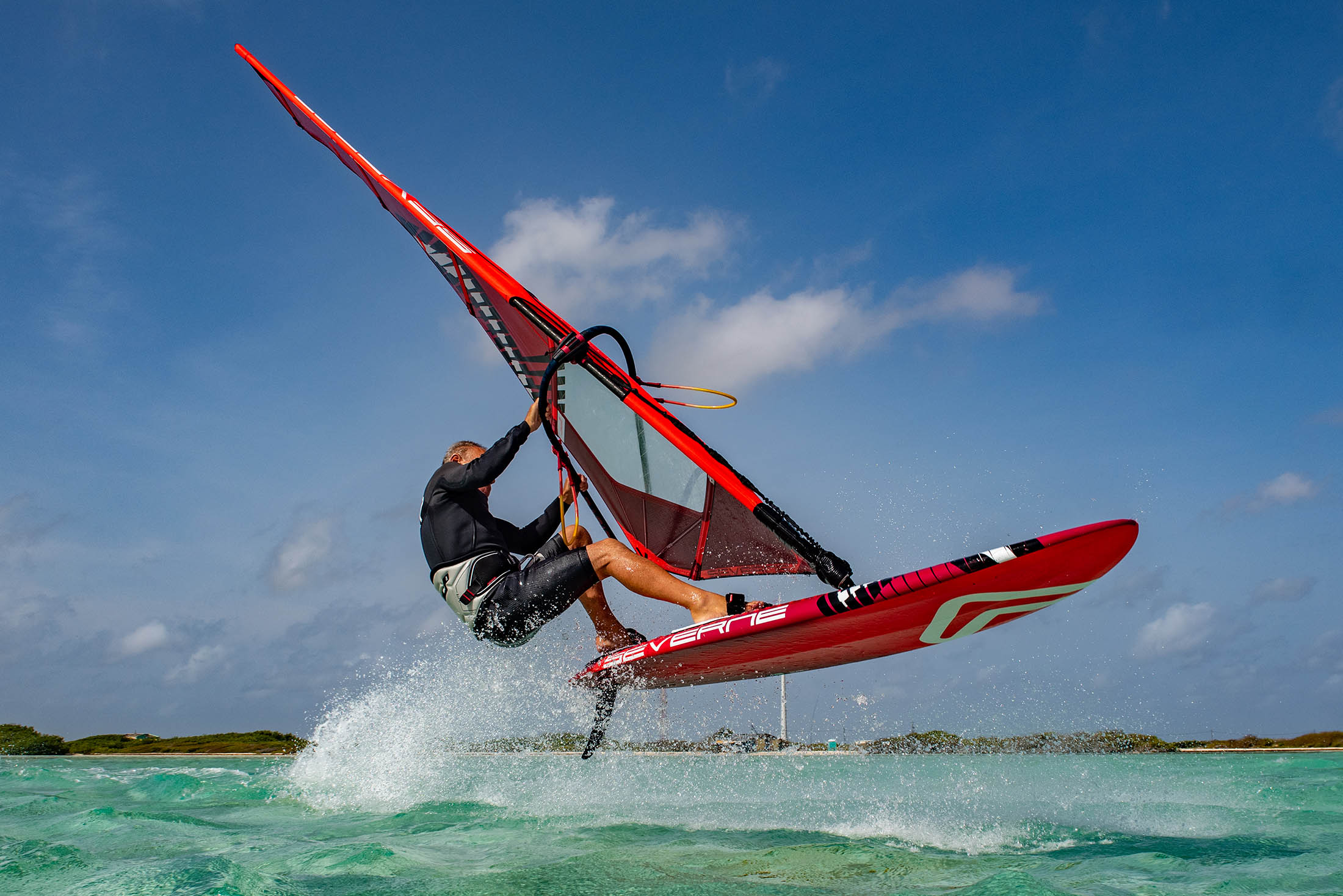
The stand out test winning Freewave board is the SV Dyno. Its’ incredible versatility enables you to switch from relaxed Freeride single fin set up to a dynamic Freewave board. The Dyno will also assist you in venturing into bump and jump and less than perfect wave conditions.
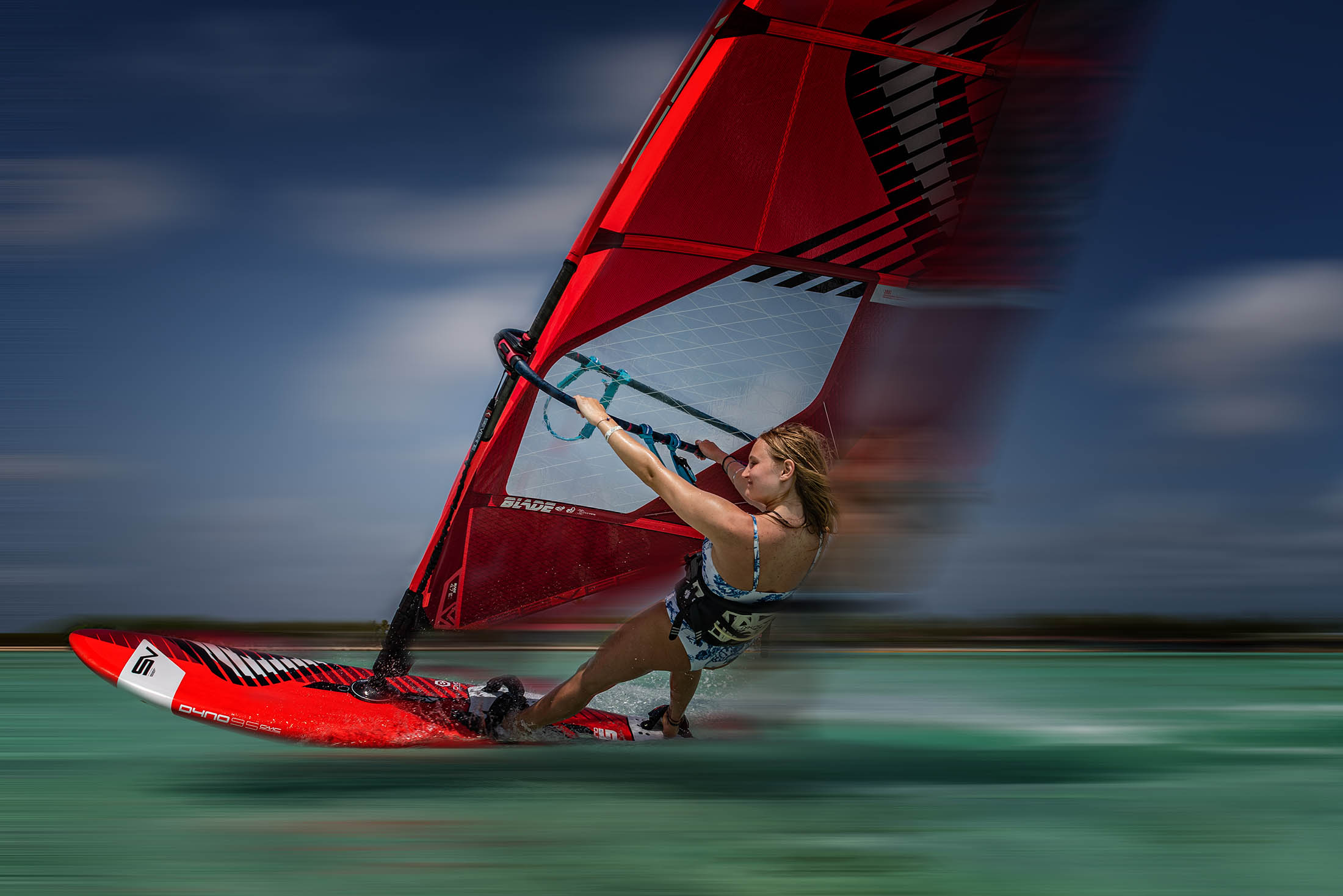
Once your kids are waterstarting, a great board choice is a Freewave. Their forgiving versatile nature (we’re talking boards here) offer a super easy all-round shape that they can develop their skills and keep that same board to get better than their parents!
If you’re mainly using sub 5m sails and venturing into the ‘wave’ part of Freewave, then you could also consider the SV Pyro. Yes, this is a true wave board, but it’s pretty fast, especially when used in Tri-Fin mode, so it’s surprisingly good at blasting about with small sails in choppy water and onshore mushy waves, particularly if you’re petit in stature.
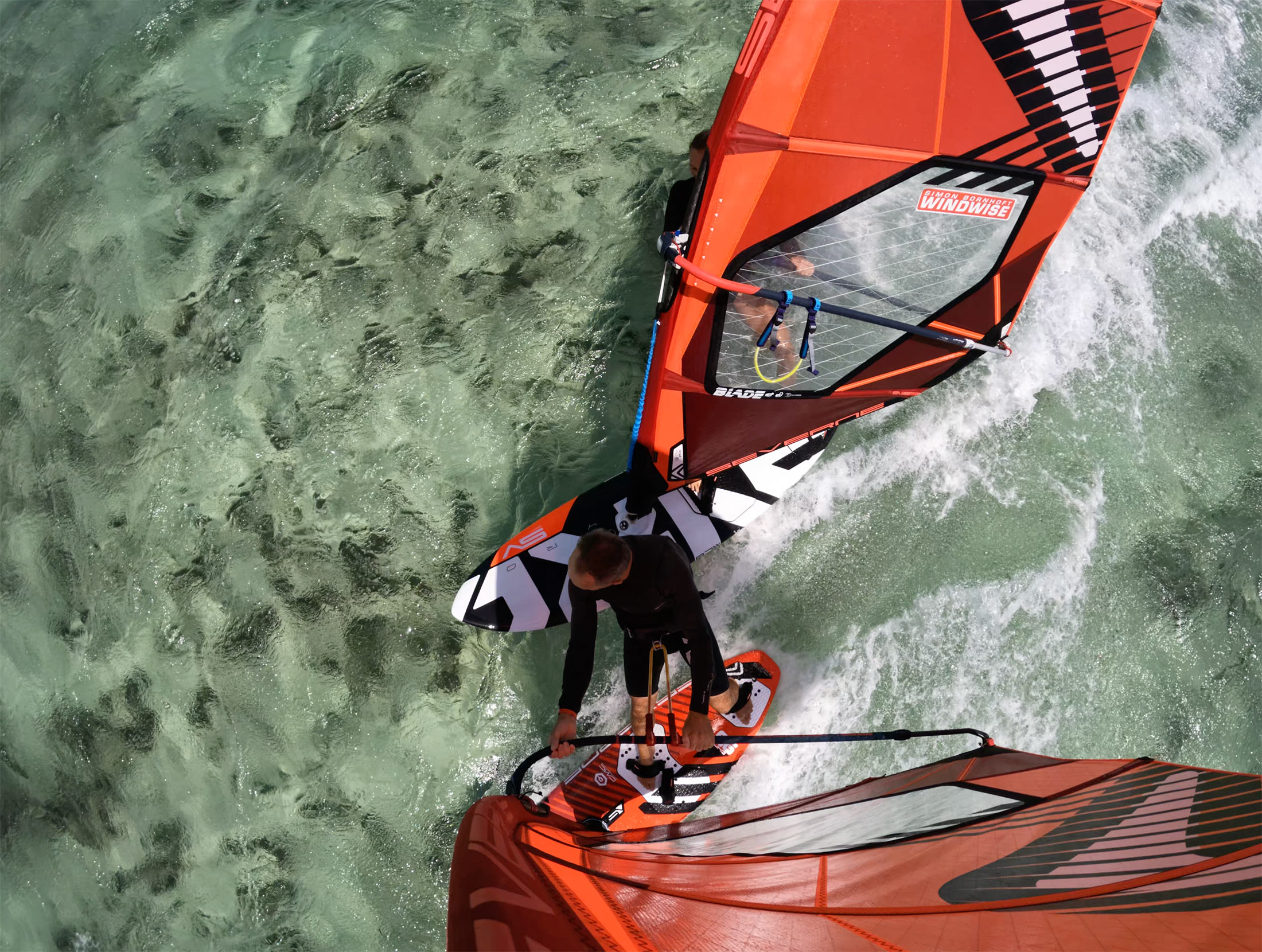
Wave boards
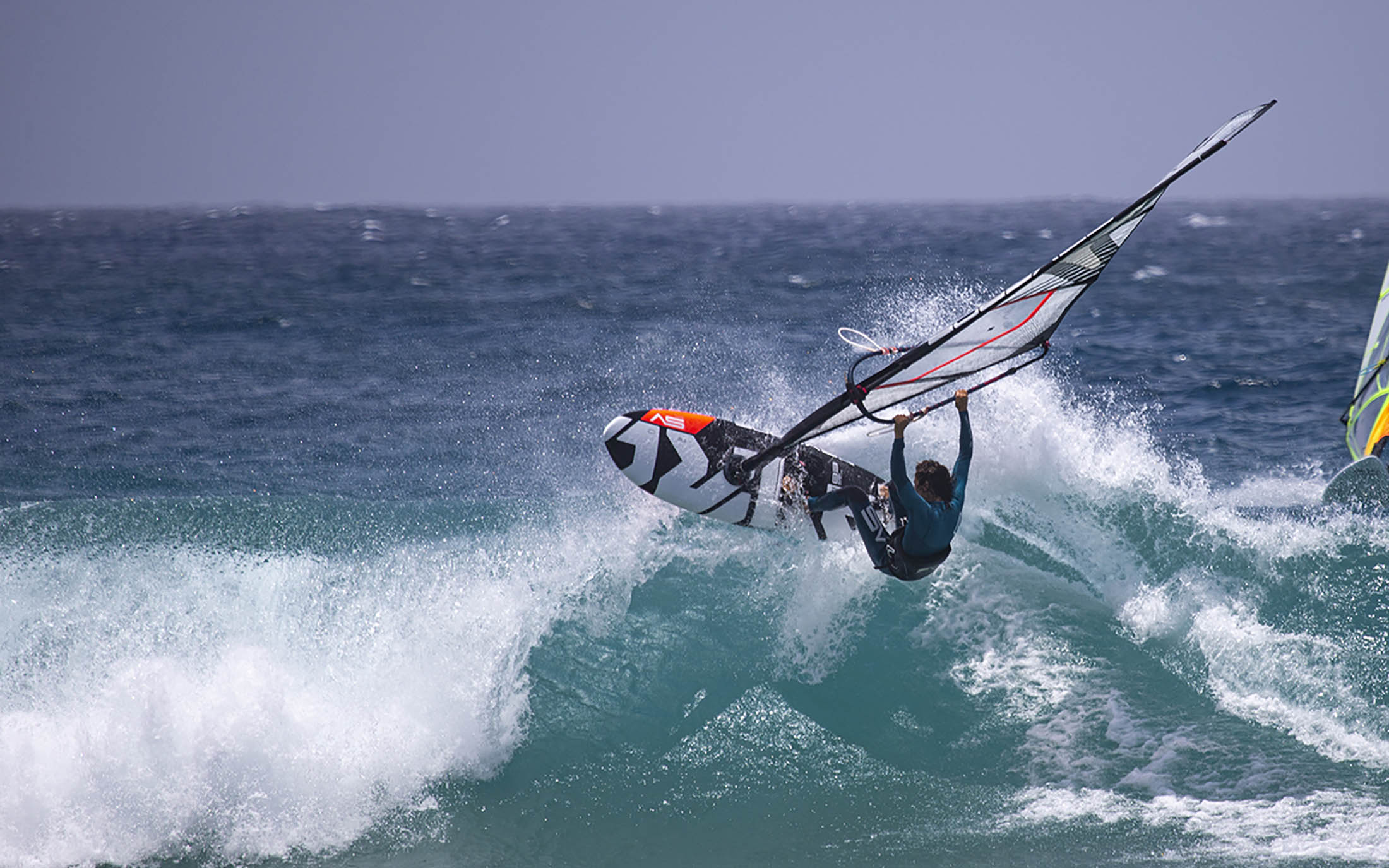
Wave boards are designed for more experienced riders looking to venture into stronger winds, breaking white water, riding waves and controlling air time. Basically, when the wind is up, the swell is on the move and the conditions get tougher, wave boards get going. Yes they are slower to plane compared to Freewave boards and are typically smaller (sub 100L), but their compact and curvy outlines allow for much quicker, tighter and more precise turns. They are incredible to sail in waves and make the whole experience so much easier for all levels – get one!
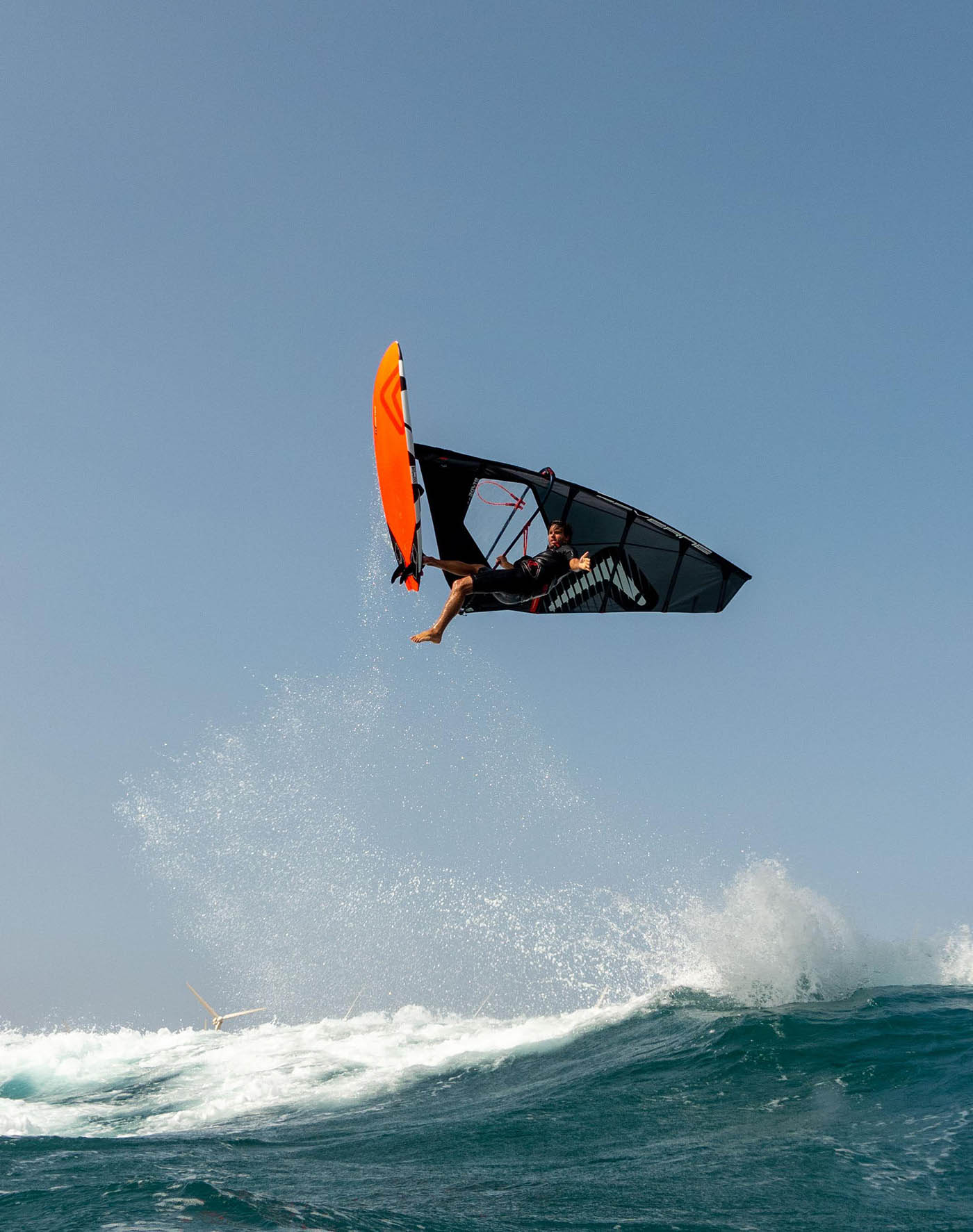
Wave board characteristics
Compared to Freeride and most Freewave boards they have increased nose and tail rocker, even softer rails and thinner narrower tails.
Footstraps: Inboard and forward compared to Freerides.
Wave Fin Options:
Quad: Four small fins create grip, but still allow the board to turn extremely tightly.
Tri Fin Thruster: Slightly faster, more directional and steadier in the turn.
Twin: Very loose and very snappy feeling.
Single Fin: Fast and directional, but less grip when the board is banked into a turn.
- More fins equate to more grip and so slower planing speeds, but better control on a wave face.
- Larger surface area = more grip and better upwind and early planing performance, but harder to turn.
- Smaller surface area = less grip, poorer early planing and upwind performance, but loose feel and very pivotal turns.
In very powerful faster waves, generally, you’ll want more rocker in your wave board.
Conversely, in slower, smaller waves and in tricky gusty onshore conditions, a faster (flatter rockered) wave board makes a big difference.
Volume Range: 70L-105L
Board Size Range: Lengths 212-226 cm / Width 52-63cm
Rig Ranges: 3.7–6m
Wind range: 18-35+ Knots
Water state: Breaking White Water / Bump & Jump / Wind Blow and Swell Driven Waves
Level: Advanced Intermediate – Pro
Wave Board Set Up: Open straps, lower boom (Than Freeride) and slightly longer harness lines.
Quiver Planning: Freeride – Freewave – WAVE
Within a board quiver, wave boards are usually the smallest in size and are often paired with a slightly larger Freewave board.
Eg. Fox 120 / Dyno 95 / Pyro 83
Q. Who are wave boards good for?
A. As soon as you want to venture into breaking white water, ride a large swell or breaking wave, then it’s wave board time. If you can sail a sub 115L board, then you will soon be able to sail a wave board, you just need to be lighter on your rear leg, due to the smaller fins and reduced tail area.
Q. When is a wave board better choice than a Freewave board?
A. If there’s lots of breaking white water, peeling waves, very high winds and you’re seeking that turning feeling, break out the wave board! If it’s very onshore, gusty, tricky staying upwind and there’s not much real wave riding going on, then got for a faster flatter rockered wave board or even a Freewave.
Q. Any downsides?
A. Due to narrow, low volume tails, and increased tail rocker, they are slower to plane, harder to get upwind and much more sensitive to foot pressure.
Severne Range Choice: Nano / Pyro / Stone
Within the SV range you can find a wave board to perfectly fit your style and location. Whilst these are all wave boards, they have very particular characteristics and qualities.
Pyro
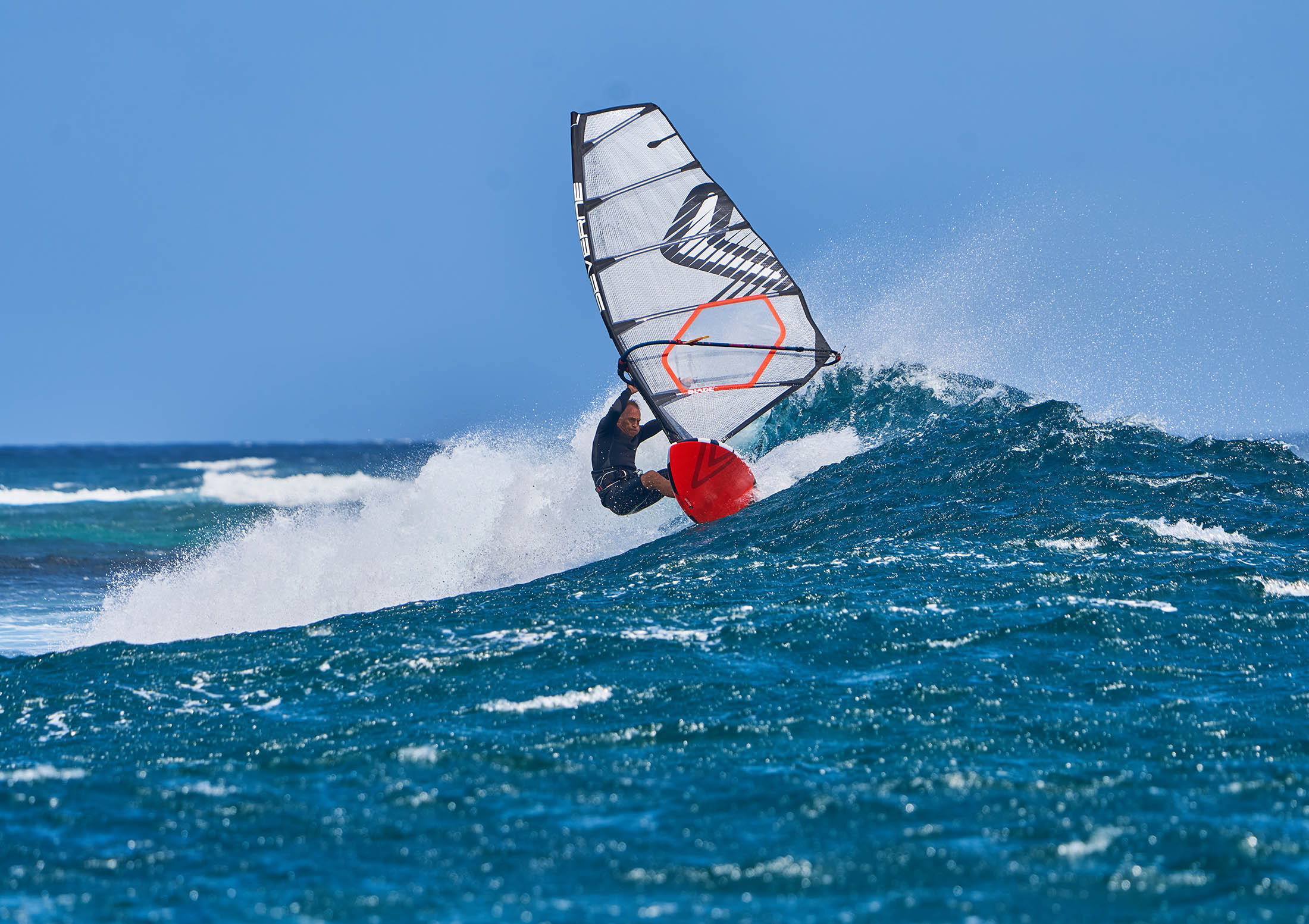
A flatter, fast, wonderfully versatile all-rounder that loves ‘down the line’, but also excels in less than perfect wave environments and bump and jump conditions. It’s Philip Kosters board of choice to cover a massive range of wave locations on the PWA Tour and a fabulous all-round wave board for the rest of us!
Nano “dedicated Wave Board”
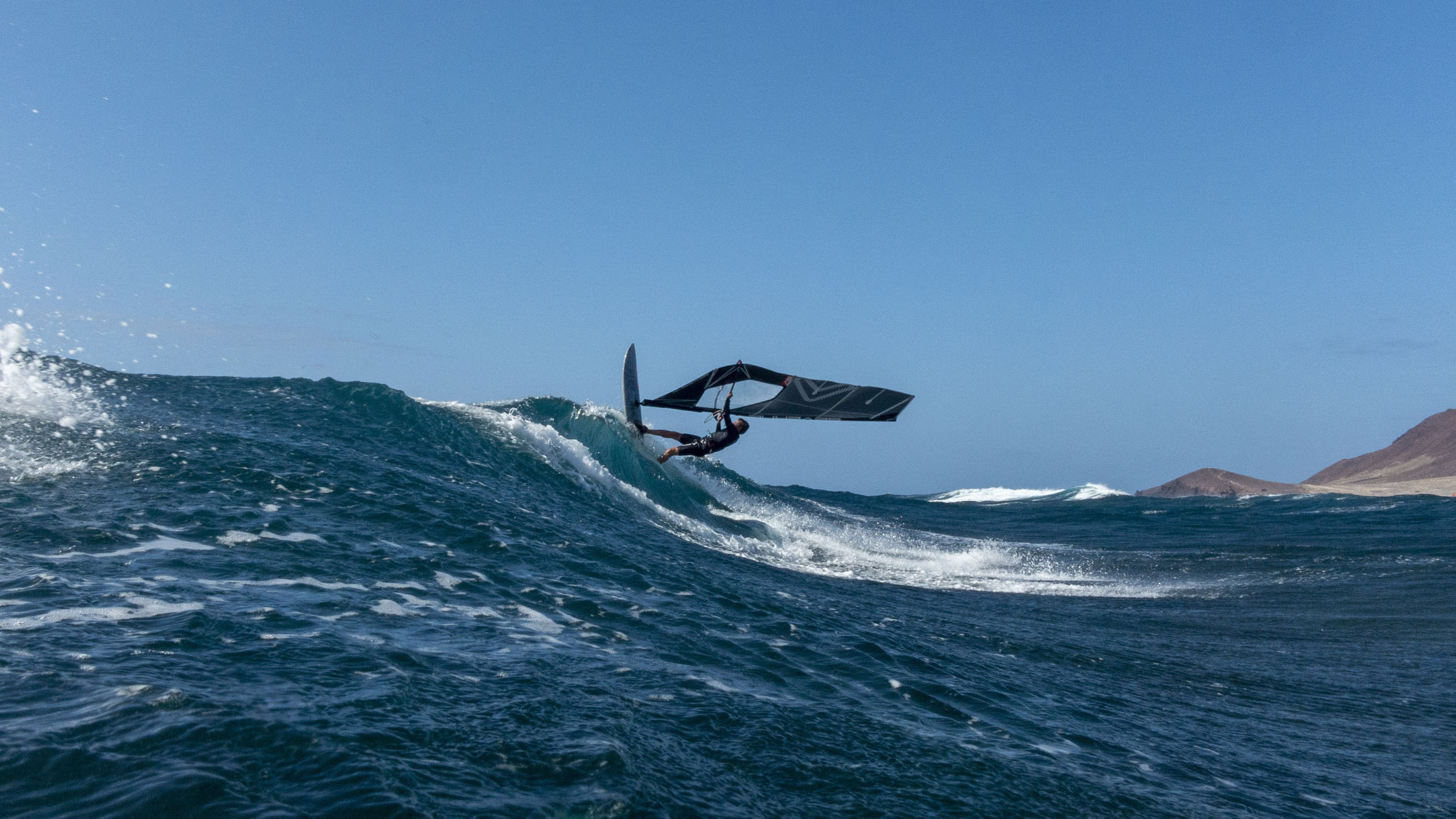
Sporting more rocker than the Pyro, this is a classic real wave board that just asks to be turned. So, if your sole focus is the ride back towards the beach on a proper wave, then this little beauty is perfect for empowering your bottom and top turns and exploring every section of the wave.
Stone Asymmetric “Match your board to you location”
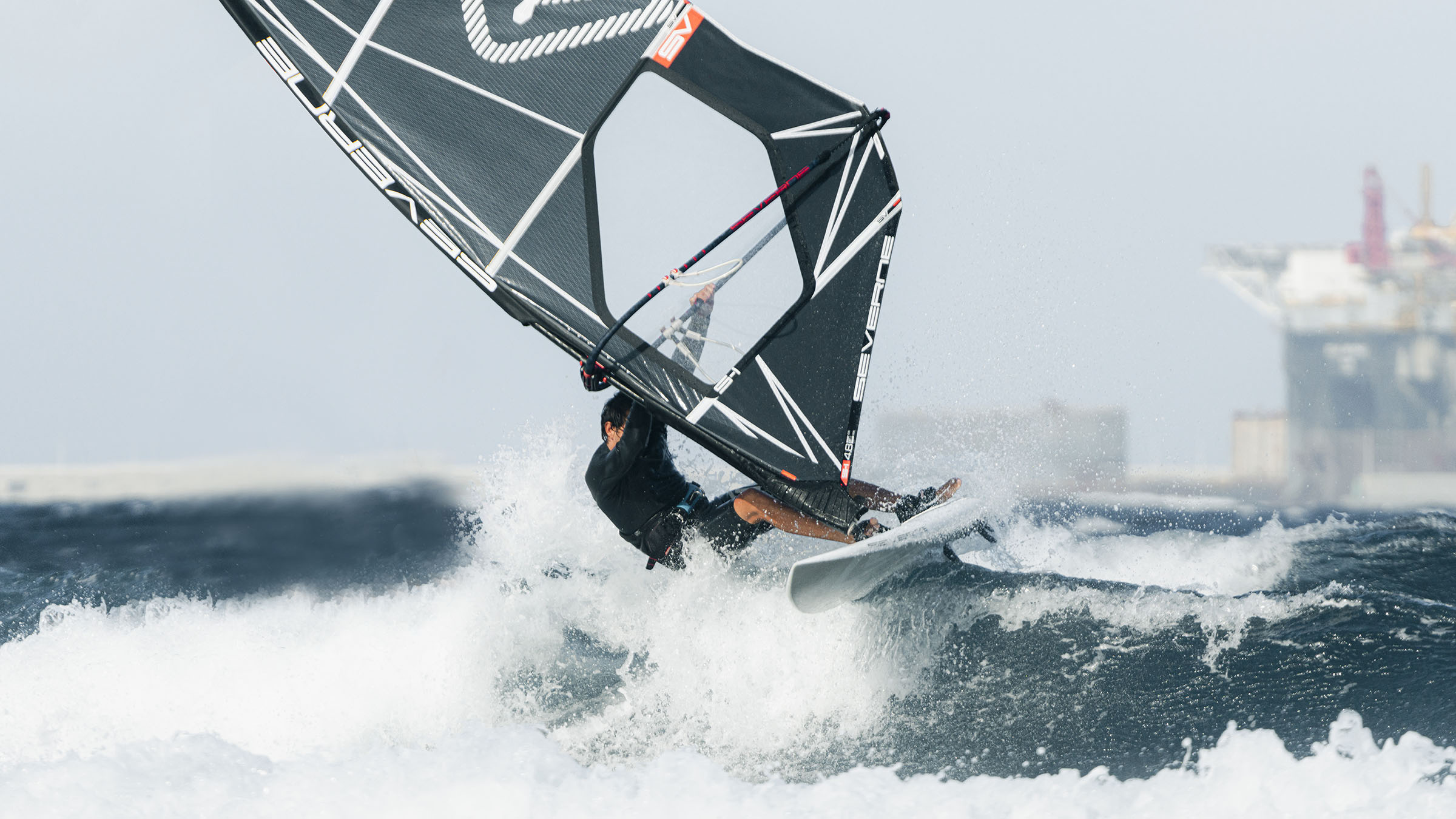
Do you only ride waves on Port or Starboard tack? The Stone Asymmetric is totally dedicated to where you sail. The long drawn out side of the board locks you into arching smooth bottom turns and the shortened rail enables you to cut back and top turn within the tightest pocket of any wave. So you can choose the board to suit your exact wind and wave riding direction.
Don’t Forget The Dyno
If you’re looking for a larger wave board companion for less than perfect wave conditions, still don’t forget your Dyno! The Dyno offers quicker planing, higher jumping and increased ease and versatility when the wind and waves don’t quite match up to the perfect forecast and work well as your ‘large’ wave board.
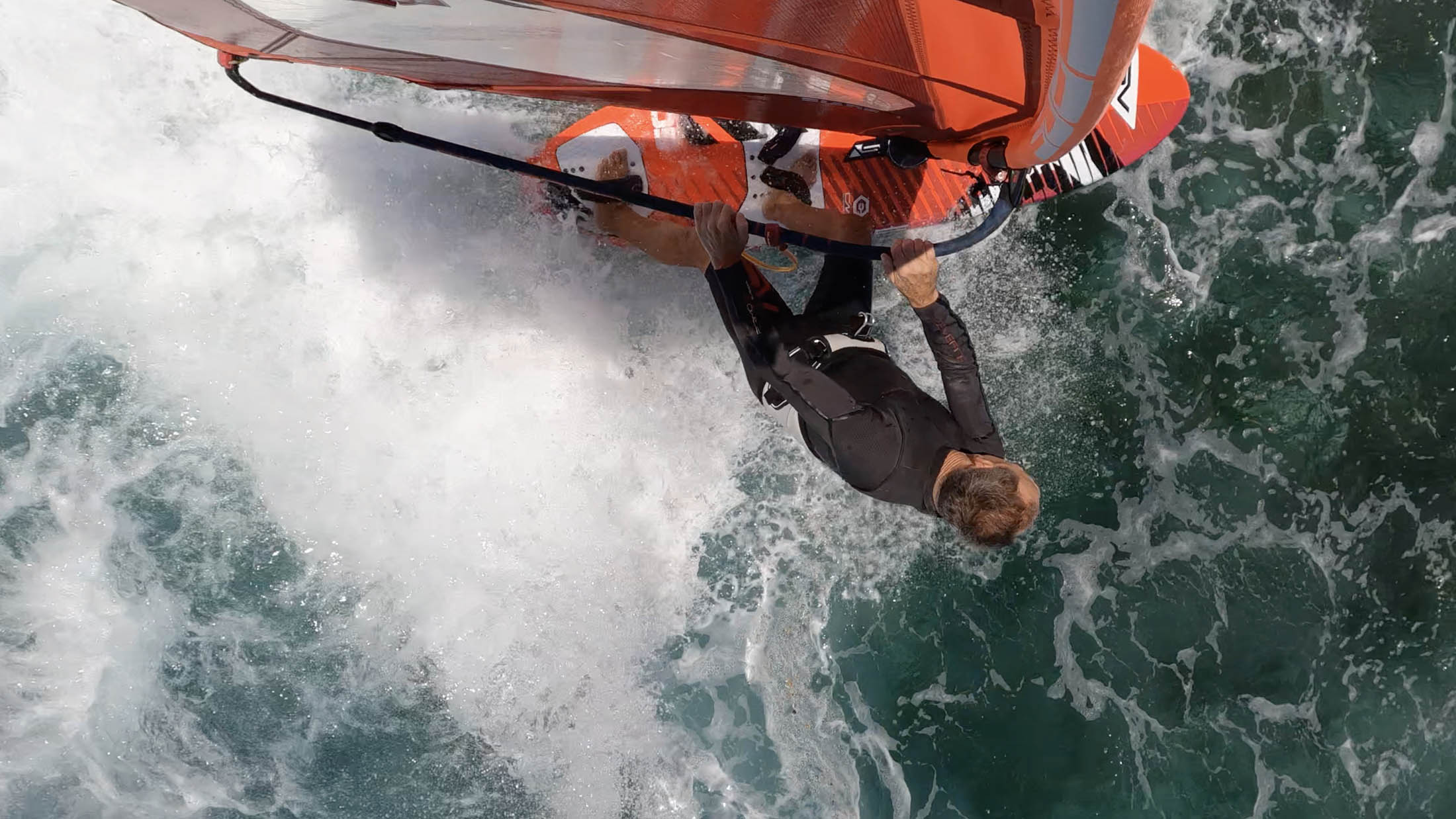
Freestyle Boards
Freestyle boards are specifically designed for performing sinew stretching, ankle flexing and gravity defying tricks. As the moves have become more radical, freestyle boards have become shorter, lightening quick, super responsive and incredibly pivotal. They feel electric to sail, being incredibly light and super sprightly to plane. They are very ‘corky and buoyant’ for their size which gives the board that all important ‘pop’ for aerial moves and for achieving pretty much everything else except sailing in a straight line for more than 100m!
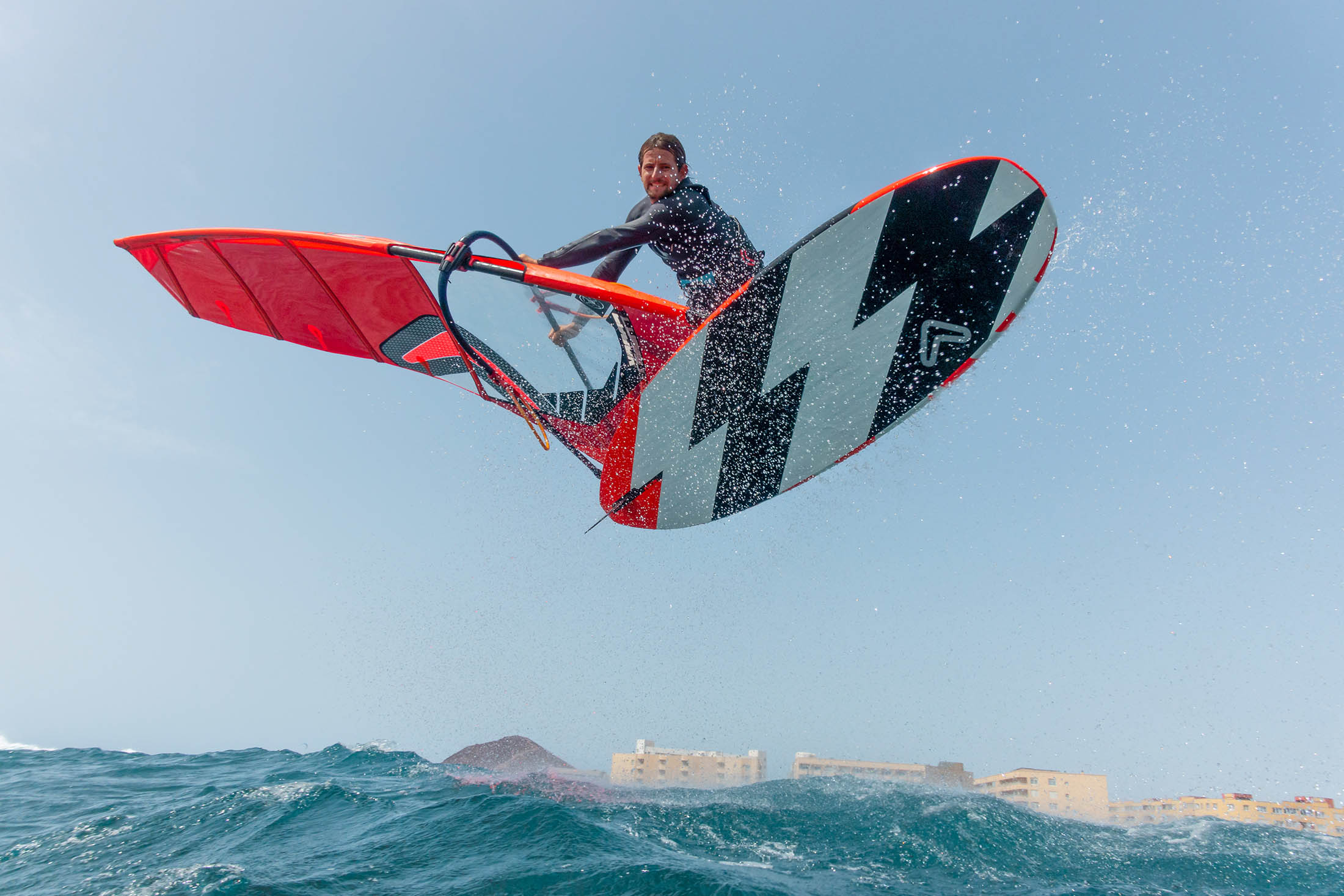
Freestyle Board Characteristics
Compared to Freewave + Wave boards they have much lower nose and tail rocker (similar to Freeride boards) and much more thickness and volume in the tail.
Footstraps: Massively inboard, forward and very open set straps positions are close to mast base to help make the board more pivotal and enable the rider to easily sail off the plane in the straps.
Fin: Tiny, usually under 20cm!
Volume range 72-102L
Board Size Range: Length 207-209cm Width 58-62cm
Sail Range: 4m-5.7m
Wind range: 15-35Knots
Water state: Flat / Choppy / Small Wave Freestyle
Level: Intermediate – Pro
Freestyle Set Up: Extremely open straps, lower boom (Than Freeride) and slightly longer lines.
Quiver Planning: Freeride – Freestyle – Freewave – Wave
Within a board quiver, freestyle boards usually sit as a flat-water option for advanced intermediates and above.
Fox 120 / Psycho 102 / Dyno 95 / Pyro 83.
Q. Who are they good for?
A. If you sail on flat water and want to play, spin and challenge yourself, freestyle is fabulous for all those with the flexibility and tendons of a teenager. If you can sail a sub 120L board, then you can sail a Freestyle board, but you need to be incredibly light on your rear leg, due to the tiny fins.
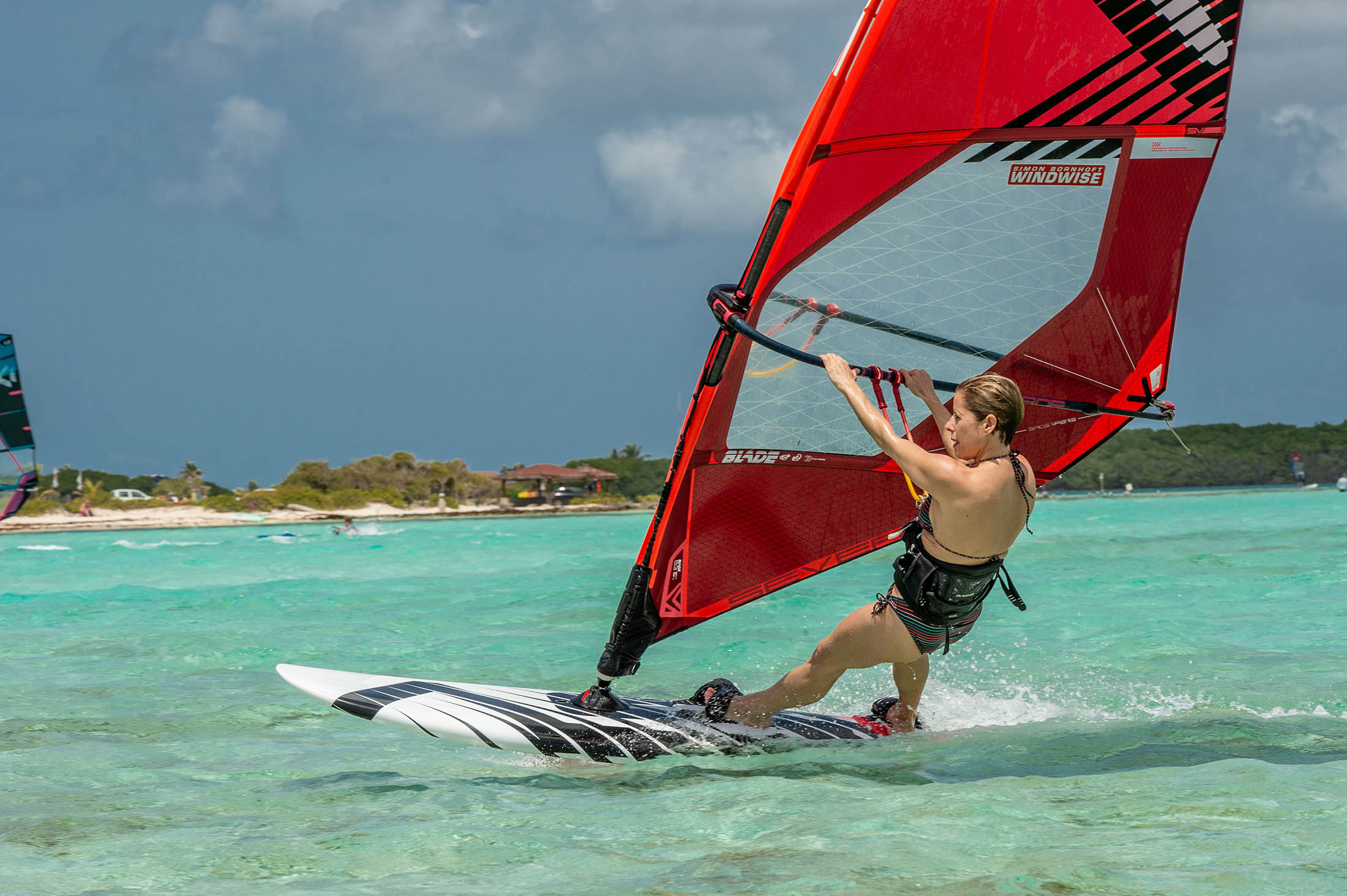
Despite the high level of windsurfer you’ll see riding them, if you put a larger fin (24-30cm) in a Freestyle board, they actually become a really playful board to sail on flat water. Super easy footstrap access, very early planing, great top speed and they will plane out of gybes quicker than a Freewave or Wave board. You’ll often see lighter sailors on comparatively smaller sails ‘Freeriding’ on Freestyle boards and loving it!
Q. Any downsides?
A. Due to low rocker and thicker tails, they are best suited to flatter water. When used with a tiny Freestyle fin, they’ll easily spin out the moment you exert any excess pressure on the rear leg. Set your footstraps incredibly large to avoid ankle injury.
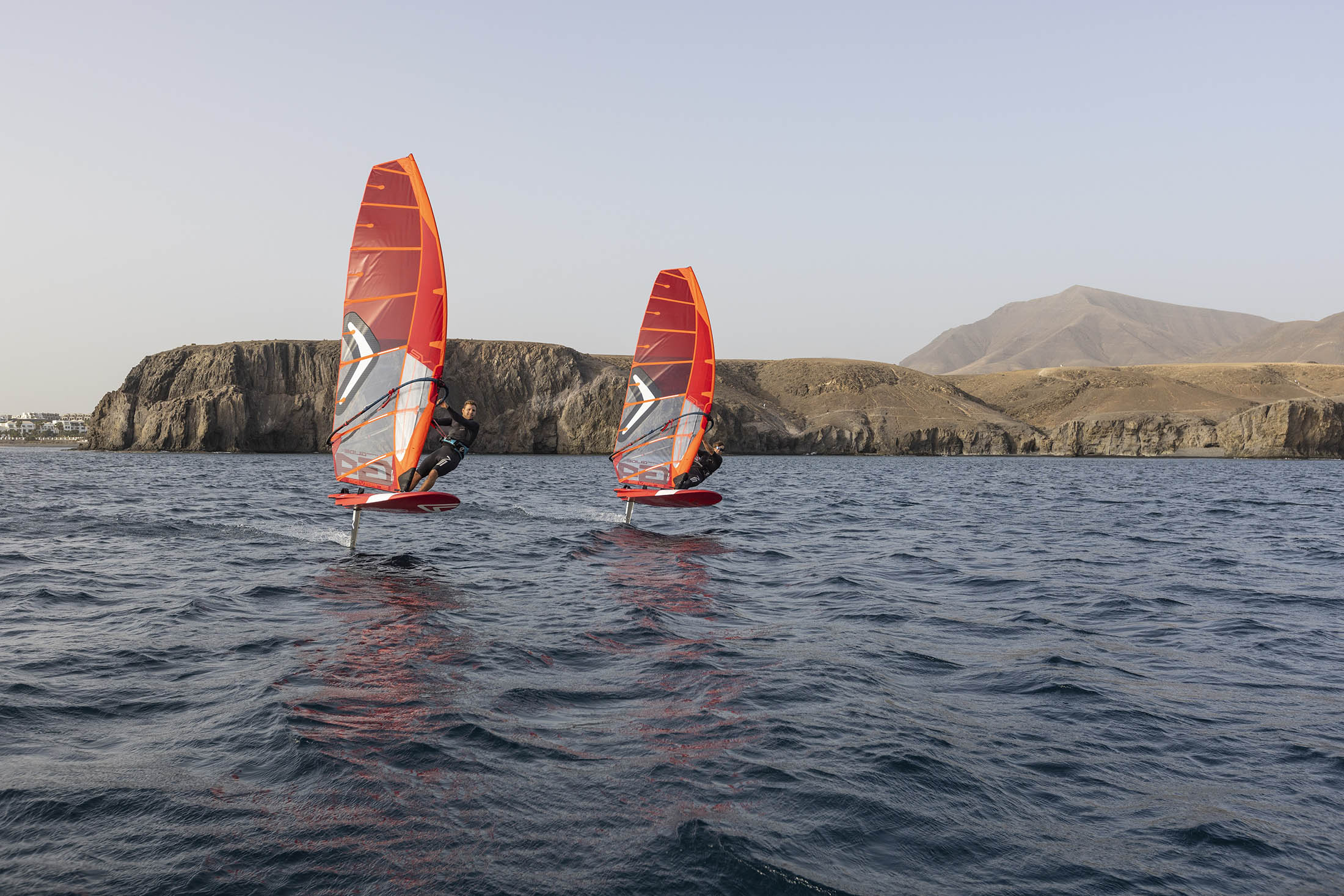
Foiling Boards “The third dimension”
Foiling has opened up a whole new windsurfing experience both recreationally and in the racing scene. The Hydrofoil or ‘foil’ (as it’s normally referred to) beneath the board, creates an incredible lift enabling the whole board to release from the water for a sensational feeling of flying! When the board releases from the water, there’s no ‘drag’ from the usual ‘wetted area’ of the board. This enables foiling windsurfers to sail faster than the true wind speed and ‘foil’ in incredibly marginal winds, with unparalleled upwind performance. Comparatively, unless you’re racing, you’ll use a smaller sail ‘foiling’ than you would do Freeriding on a standard board using a fin in the same wind. All of which makes ‘Foiling’ a fabulous choice for those gusty on off and marginal wind sessions.
Windsurf Foiling Board Characteristics
Foiling boards are typically shorter than Freeride boards of similar volume, but they’re much wider to lever against the constant lift from the foil. They also have more boxy rails, elevated shoulders and a very forgiving forward rocker line for unwanted ‘touchdowns’ at speed.
- Flat tail rocker, sharper boxy rails, increased forward rocker and raised ‘shoulders’ for gentler touchdowns!
- Shorter, thicker and more compact compared to Freeride boards of similar volume.
- Freeride (SV Alien) and Racing (SV Hydro) Foiling boards have outboard straps to lever against wide foils.
- Freestyle Foiling boards (SV Predator) have inboard straps for a more upright stance for a more playful feel.
Simon Says
Have very open easy exit footstraps for initial foiling sessions in case you turn the board right over. Also keep hold of the boom if you crash to avoid the foil beneath you!
Foiling Boards Volume Range 95-208L
Board Size Range: Length 235-220cm / Width 64-100cm!
Sail Range: 4-8m depending on your style of Foiling.
Water state: Flat / Choppy / Rolling Swell – but you won’t feel it.
RedWing Foil Masts: 90cm
Red Wing Foil Sizes: 1000-1400-1800
Level: Intermediate – Pro
Quiver Planning: FOILING – Freeride – Freestyle – Freewave – Wave
Within your board quiver, Foiling boards are now often used ‘before’ you’d get onto even fairly large Freeride boards. It’s quite common to Foil in 10-18 Knots and then move down onto a Freeride / Freestyle or Freewave board when the Foil or wind become too much.
Alien 120 & RedWing – Dyno 115 / Pyro 87
Q. Who are they good for?
A. If you’re looking to ‘get going’ in marginal or gusty winds, then windsurfing foiling offers an incredible experience. From a technical point of view, if you can comfortably blast in the footstraps on a Freeride board, then you can learn to windsurf foil.
Q. What’s the best conditions and locations?
The best conditions for windsurf foiling is 10-20 Knots in sheltered coastal areas, flat inland lakes and reservoirs – with consistent water depth over 120cm!
It’s best to avoid any breaking waves, especially launching!
Q. Do I need a specific foiling sail?
A. Initially you can use sails like the Freeride Severne Gator or Severne Blades. As you become a more competent foiler, you can ramp up that locked in speed feeling with a camber induced SV FoilGlide or HyperGlide rig. If you’re just looking for super early planing using the smallest sail possible, then the SV FoilFreek has incredible power to rig size ratio.
Severne Foiling Board Range Examples
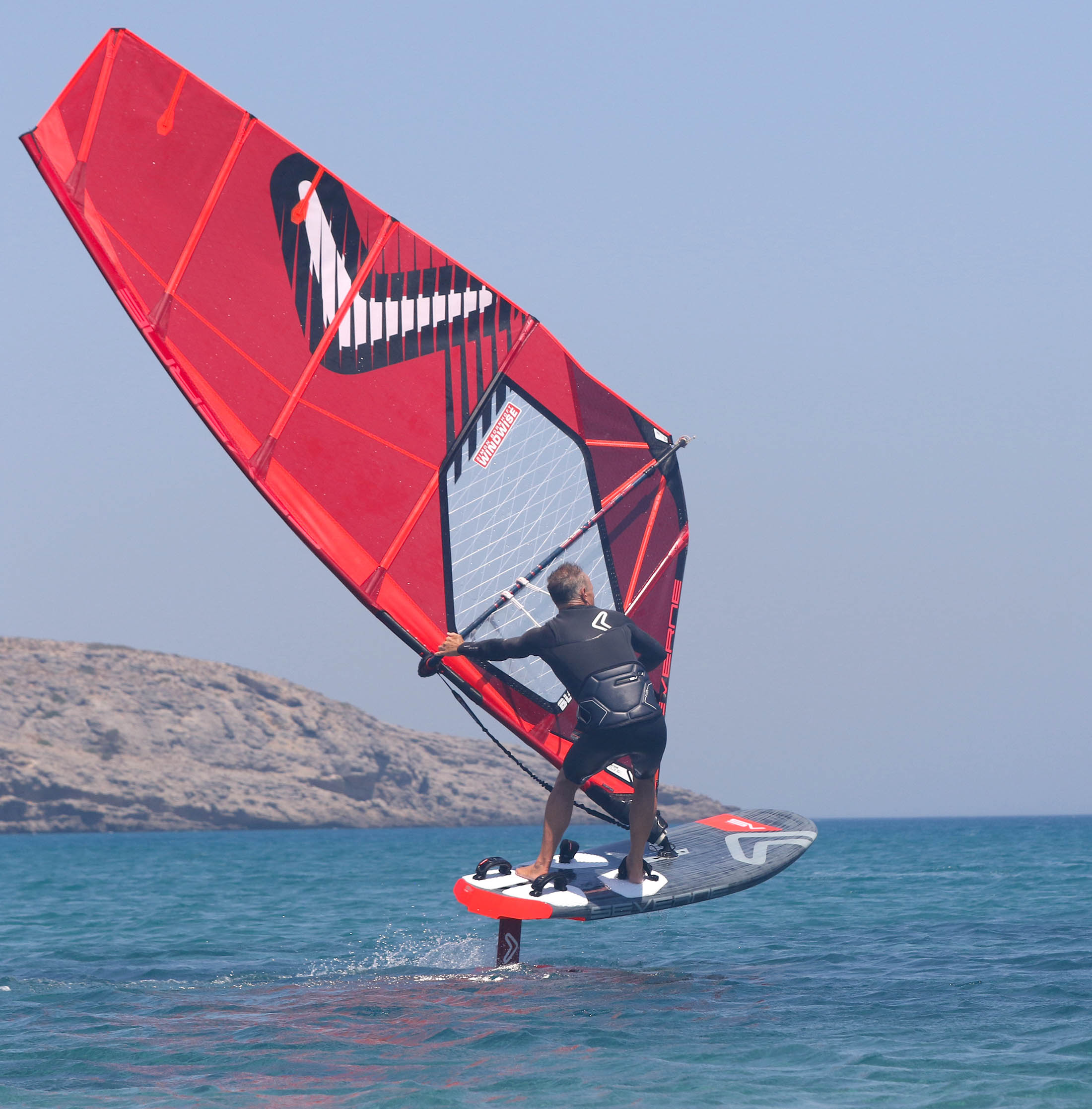
Alien “All round super easy”
When matched with the RedWing Foil this set up is an incredibly user friendly light recreational foiling board, with very forgiving touch downs and a calming balanced feel. You’ll be going in your first session for sure! As for rigs, either ramp up the speed with a SV FoilGlide or go for that super light small rig feeling using a Freeride sail like a Gator or FoilFreek for laugh out loud feather light handling in the turns.
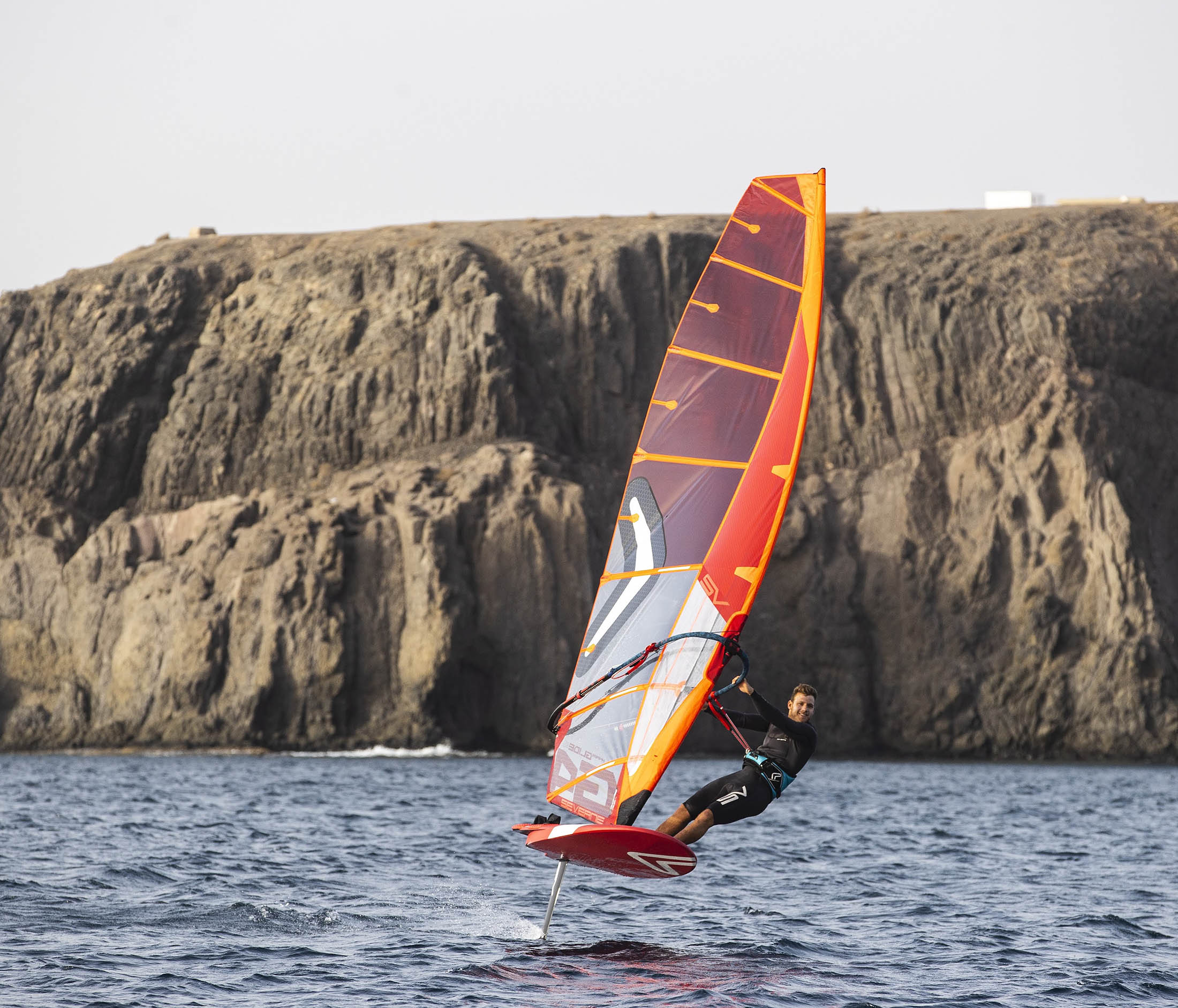
Race pace
If you’re looking for top speed and the control of a PWA racer, then you’ll find the Hydro is an absolute flying machine, which matches up perfectly with the SV HyperGilde for supreme drive and control at the fastest foiling speeds.
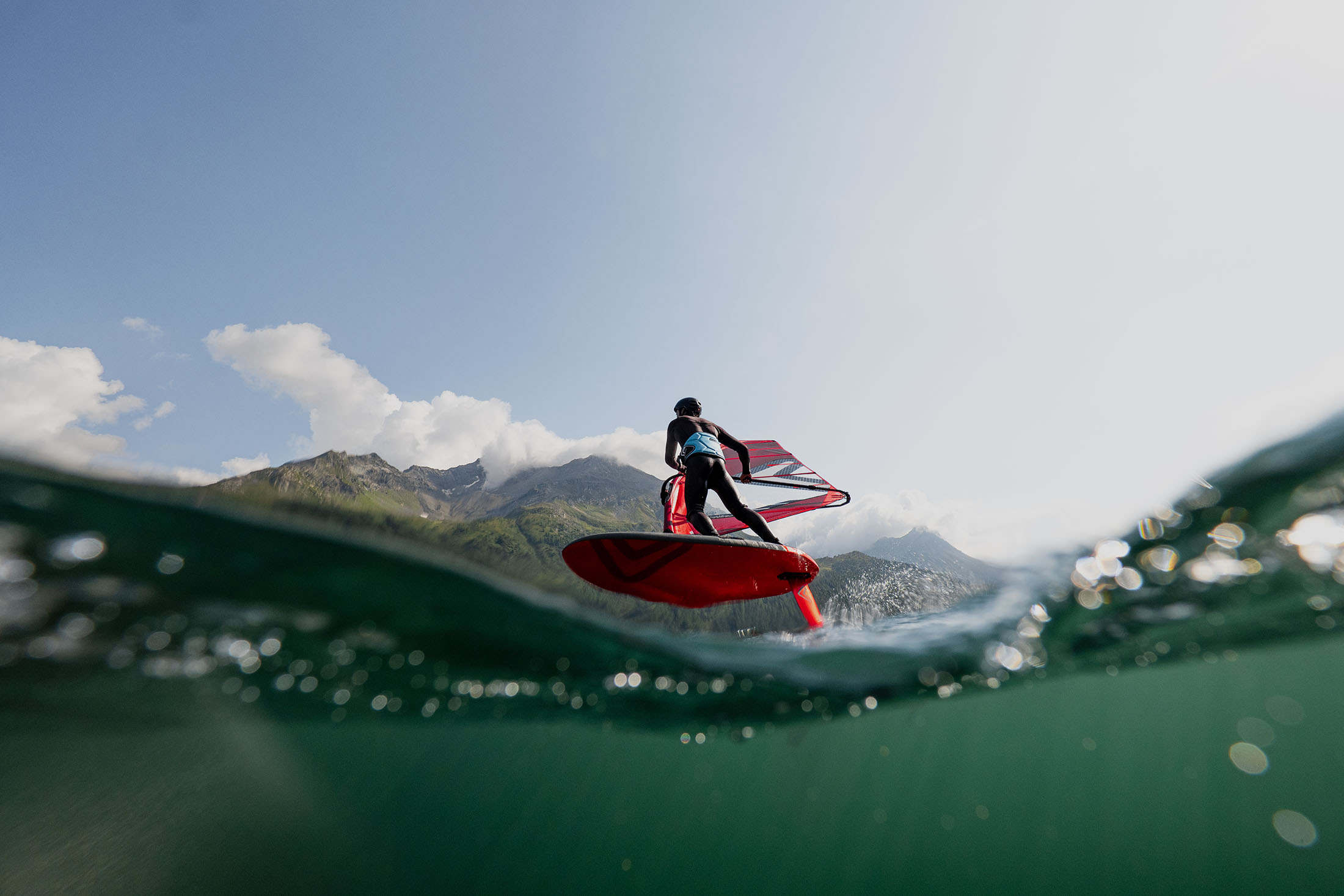
Flying Freestyle
If you don’t like straight lines and are into turning, riding the swell or getting air then the SV Predator foilstyle board will take you as far or as high as you dare to go! Matching it up with a FoilFreek is a sure way to create the lightest feeling in the foiling world. Equally if you just want to be more playful on a foil, this joyous little board is the perfect feasible freestyle board for 360’s, gybe variations and a foot sensitive experience.
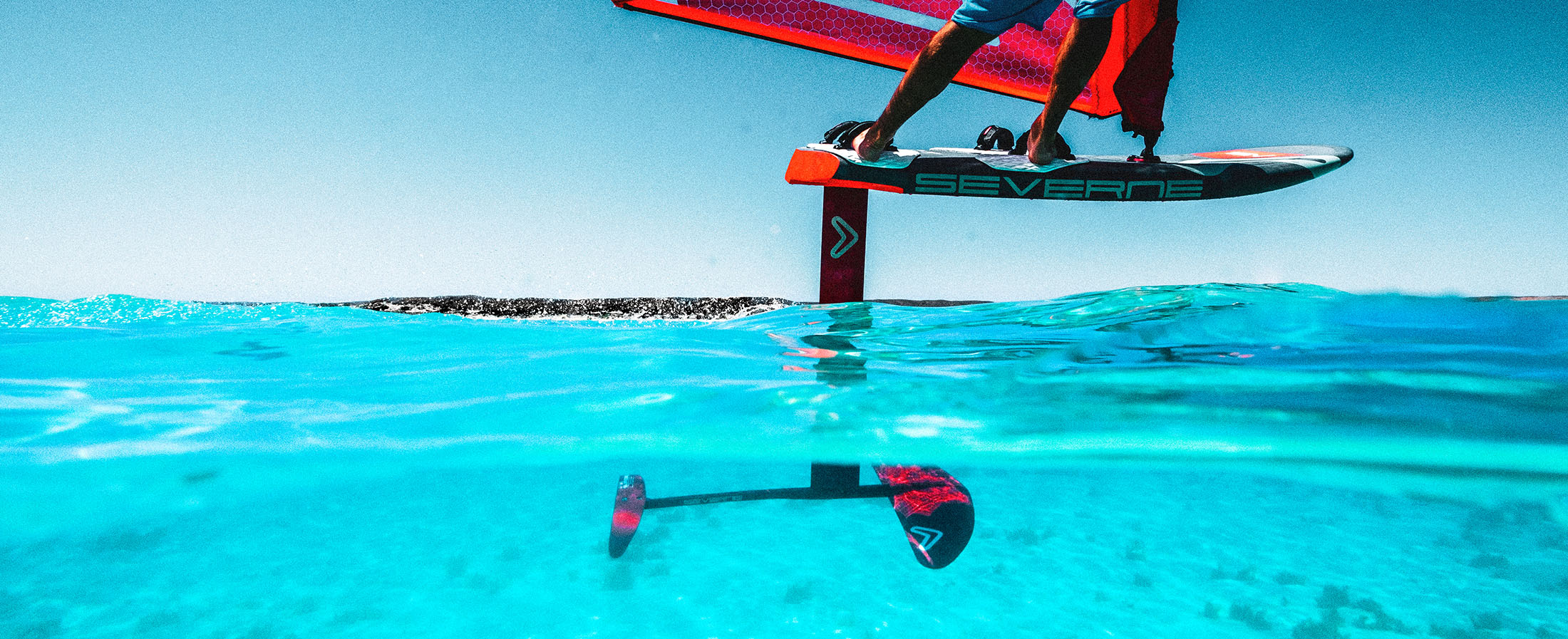
The Reliable Redwing
For recreational windsurf foiling the test winning SV RedWing is one of the most stable, reliable and easy lifting windsurfing foils. The 1400 & 1800 front wings are perfect for intro to foiling and super early Foiling in very little wind. If you then want more speed, turning manoeuvrability or you’re handling over-powered rigs, then switch down to the 1000 front wing.
So that is a complete guide of the kit done!
In Part 2 What Are You On “How to choose the right volume board” we’ll give you guidance on how to choose the right board volume for your level, stature and the style of board you’re intending to use.
Ask Simon
If you have any questions about any aspects of your windsurfing, you can ask Simon @ info@windwise.net. Also worth joining a skill enhancing Windwise experience to get the most out of your time on the water and try some stunning Severne kit under the guidance of your personal coach!
Windwise Winds Of The World Tour 2023
Freeride / Freewave / FoilWise
Tenerife + Bonaire + FeelViana + Alacati + Prasonisi + Mauritius + More
Copyright: Simon Bornhoft Windwise 2022
